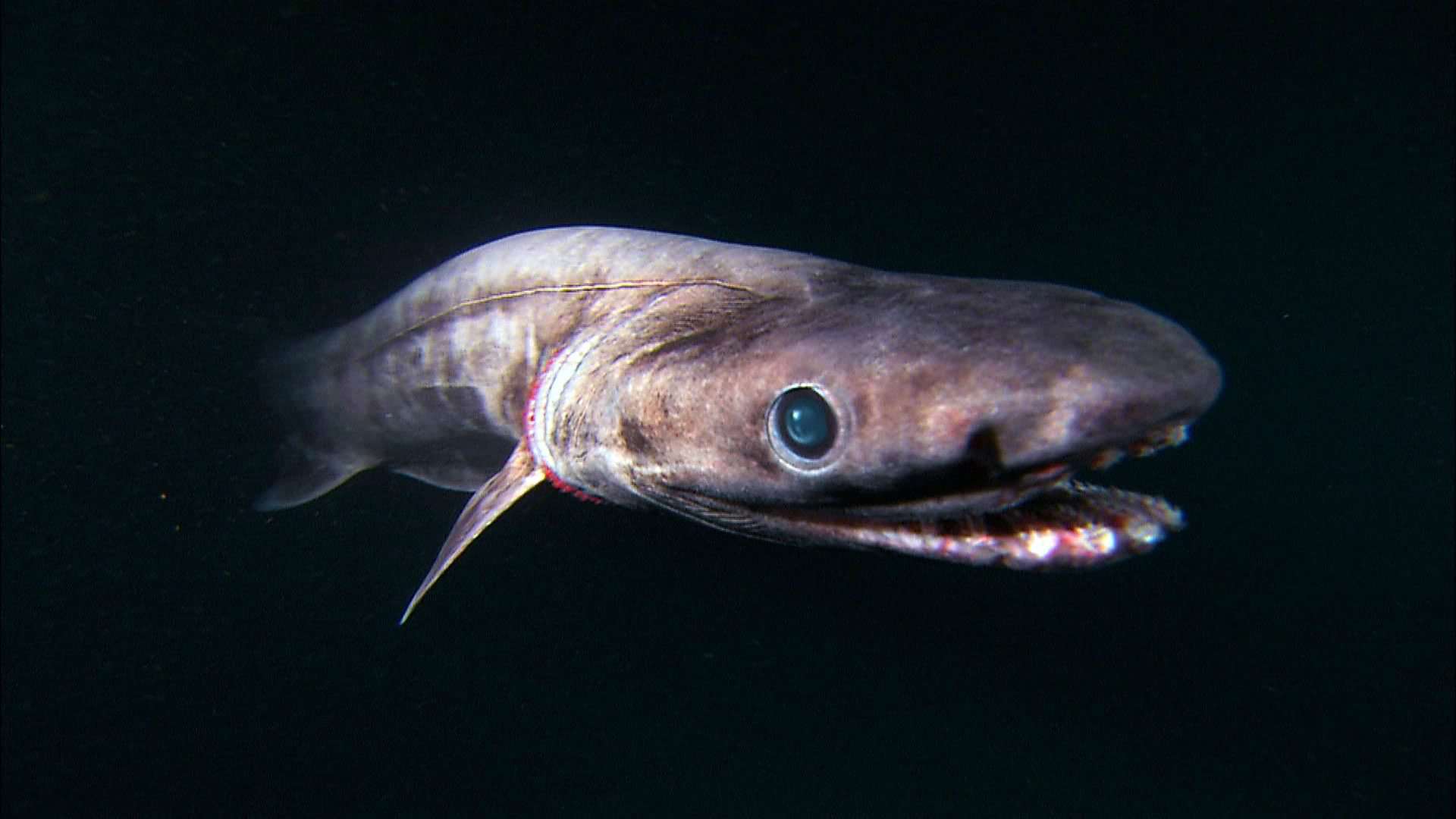It has been suggested that we know more about deep space than we know about the deep oceans. After all, we know that there is no such thing as a giant squid: they are only the stuff of Medieval seafaring lore, right? Not quite. The giant squid is real, and while they may not pose an imminent danger to ships on the ocean sea, they can exceed lengths of 30 feet.
However, there are plenty of other marine oddities, about which we know very little. Some are living fossils that have changed very little since prehistoric times; studying them can give scientists clues about earth’s distant past. Others are extremely rare, such as the shark that has been seen less than 50 times in over a century. Keep reading to learn more about strange sea creatures you’ll probably never see in real life, like terrifying spider crabs, giant squids, octopus, and more.
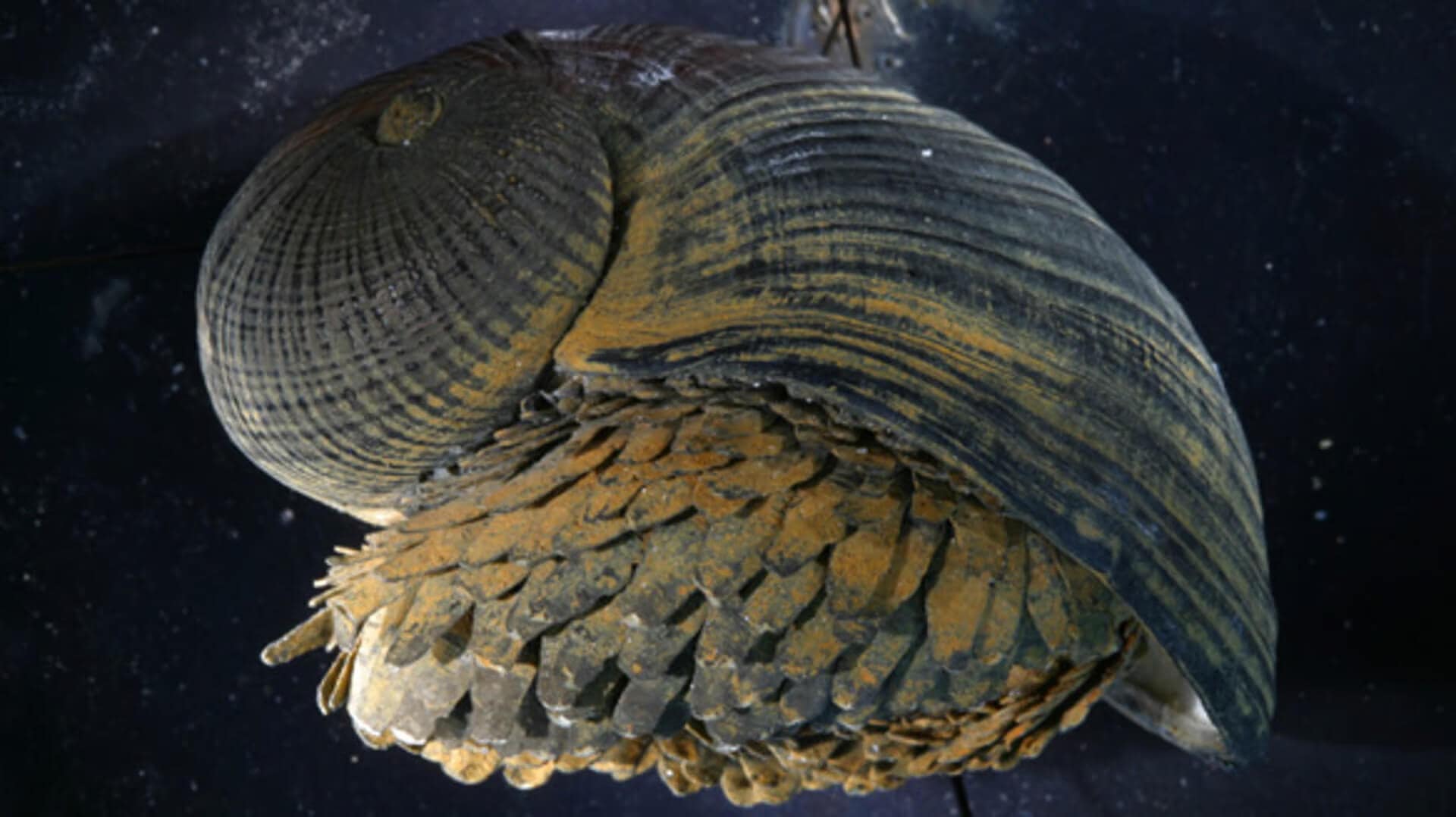
The Armored Snail Thrives In Deep-Ocean Vents
Armored snails are the stuff of legends. These creatures live in deep-ocean vents, which are extreme environments that receive high levels of heat and chemicals from underneath the ocean floor. And their multi-layered shells probably help protect them in this intense environment.

What exactly is the shell made of? For starters, the composite material and structure are unlike anything that humans have contrived. Like other organisms that live in the deep-ocean vents, armored snails are tiny, usually measuring only about four millimeters or about 0.16 inches.

There Is A Christmas Tree Worm
Scientists discovered this oddity that lives in Australia’s Great Barrier Reef. Christmas tree enthusiasts may be dismayed to see that the Christmas tree worm’s “branches” are blue and look more like a fake plastic Christmas tree. Nevertheless, the points at the end of each bristle look like they could be Christmas tree lights.
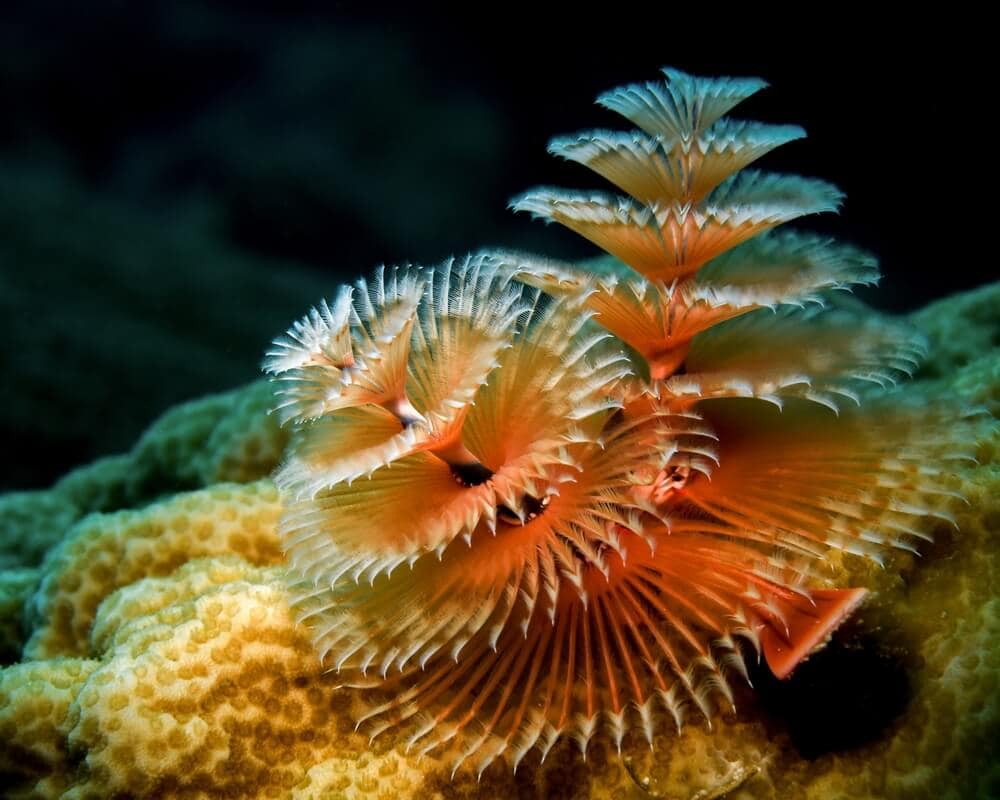
The whole “tree” isn’t the worm; the worm itself lives inside the vertical tube that resembles the Christmas tree trunk. It can recoil its “branches” at will, probably as a defensive mechanism to protect itself from its enemies.
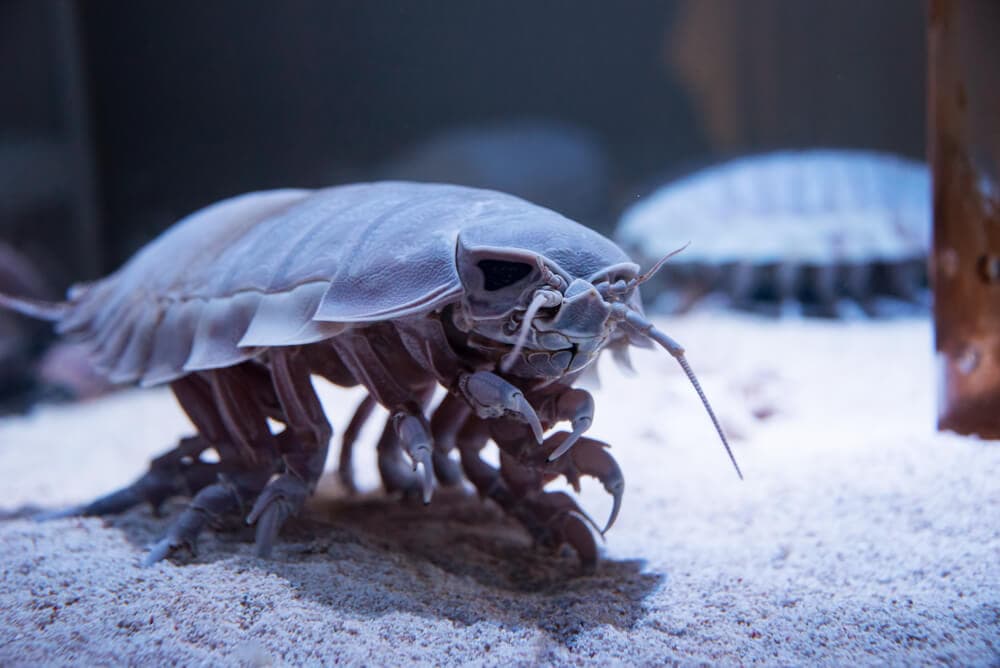
Giant Isopods Are Sea Vultures
There are about 20 different types of giant isopods, and they are called “giant” for a reason. These underwater creatures can grow to be up to 2.5 feet in length – just imagine one running through your kitchen in the middle of the night! They probably grow so big as an evolutionary adaptation that allows them to withstand immense underwater pressure.
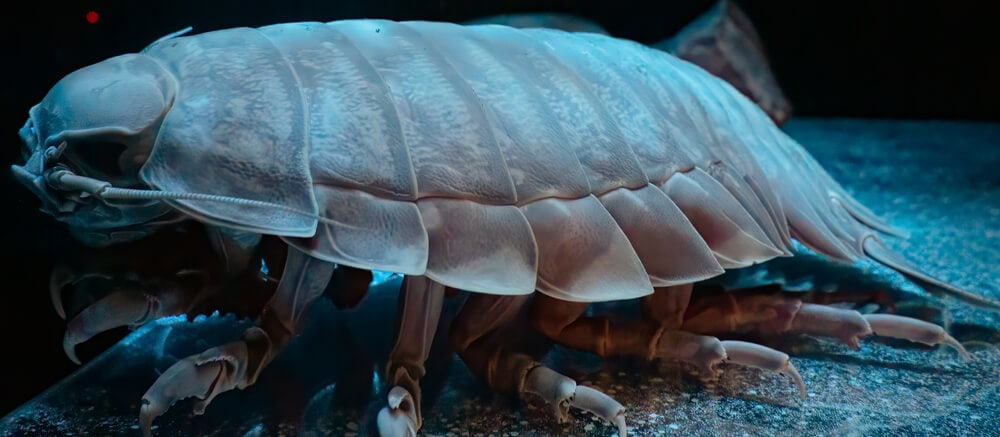
Giant isopods help keep the oceans clean. They feed on dead marine life, usually when it falls from closer to the surface of the ocean, thereby helping to purify the water. In other words, they do in the ocean basically what vultures do on land.
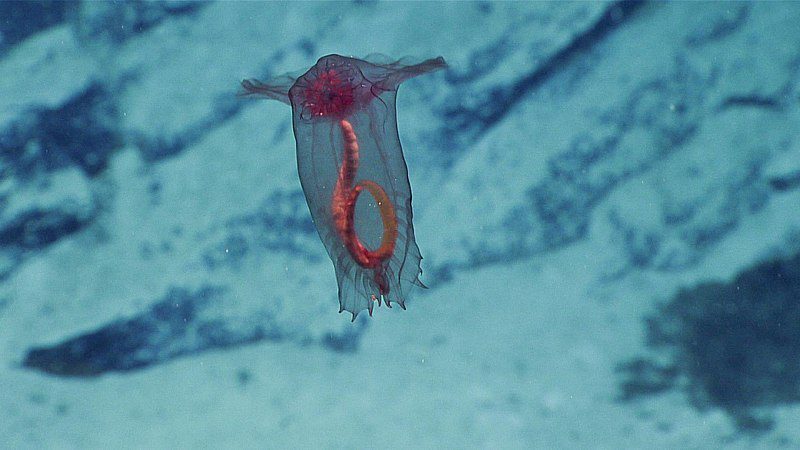
Pink See-Through Fantasia Is A Translucent Sea Cucumber
Sea cucumbers are oddities in and of themselves. Far from being a marine vegetable, as the name suggests, echinoderms belong to the same animal family as sea urchins and starfish. They live on the seafloor and feed in a way similar to earthworms, basically eating dirt and then pooping it out.
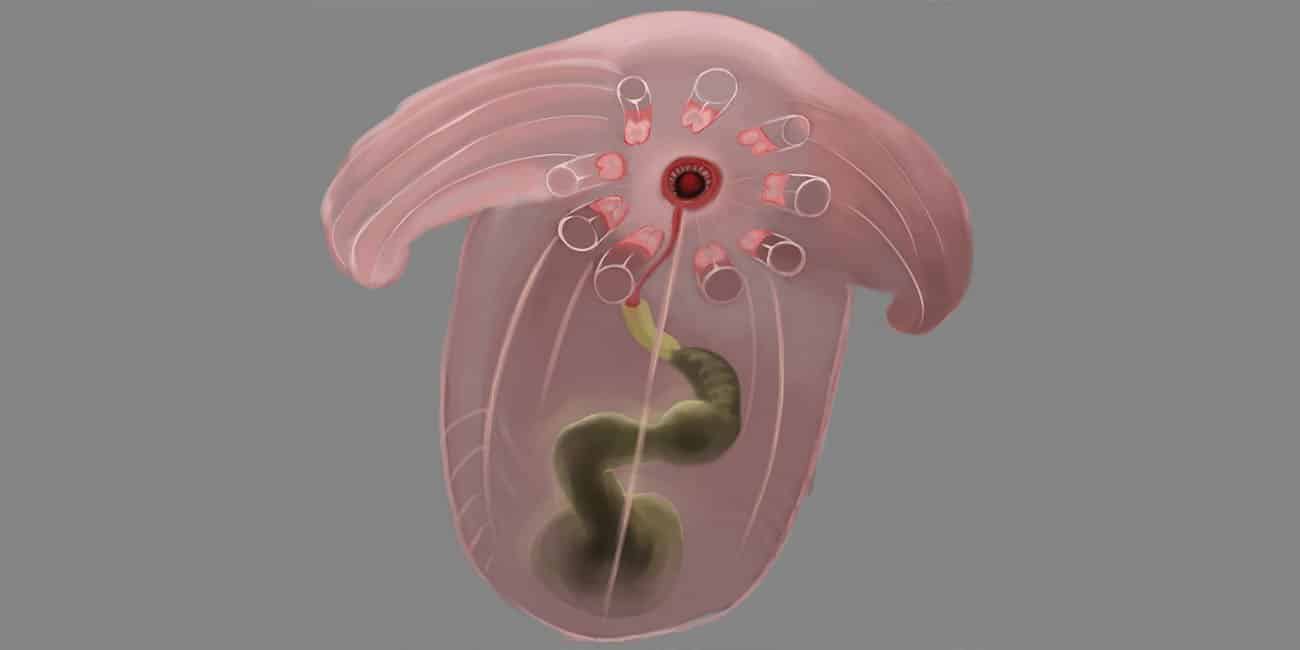
Pink see-through fantasia is a type of sea cucumber with a brilliant hot pink color but is transparent. These creatures live in the western region of the Pacific Ocean. They dwell on the seafloor about a mile to a mile and a half deep.
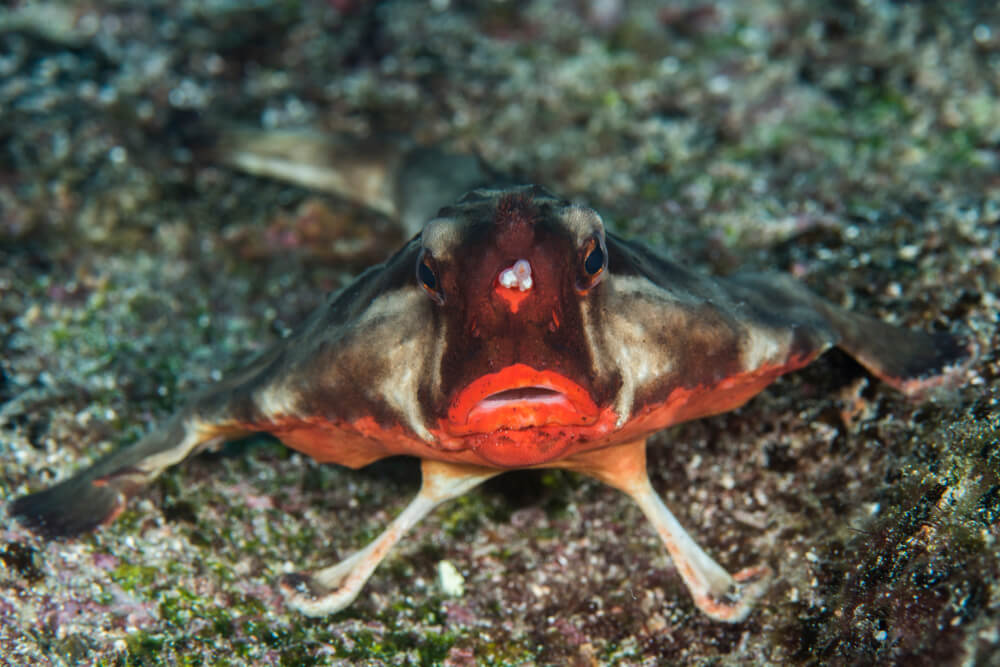
The Galapagos Batfish Looks Like It Is Wearing Lipstick
The Galapagos batfish, also known as the red-lipped batfish, lives on the ocean floor off the coast of the famous Galapagos Islands. The Galapagos Islands have long been celebrated for their high level of biodiversity, which scientist Charles Darwin has been studying to understand the origins of life better.

The red-lipped batfish looks like it has legs for walking along the seafloor, but those appendages are fins. It swims around and can also stand on its fins to get a better view of its surroundings, especially to see if there are any predators nearby.

Marrus Orthocanna Is A Colony That Functions As One Animal
Portuguese Man-Of-War is a special kind of creature that isn’t one kind of creature at all; it is a collection of several animals that function together as if they are one animal. Marrus orthocanna is a microscopic, and less well-known, version of the same thing.
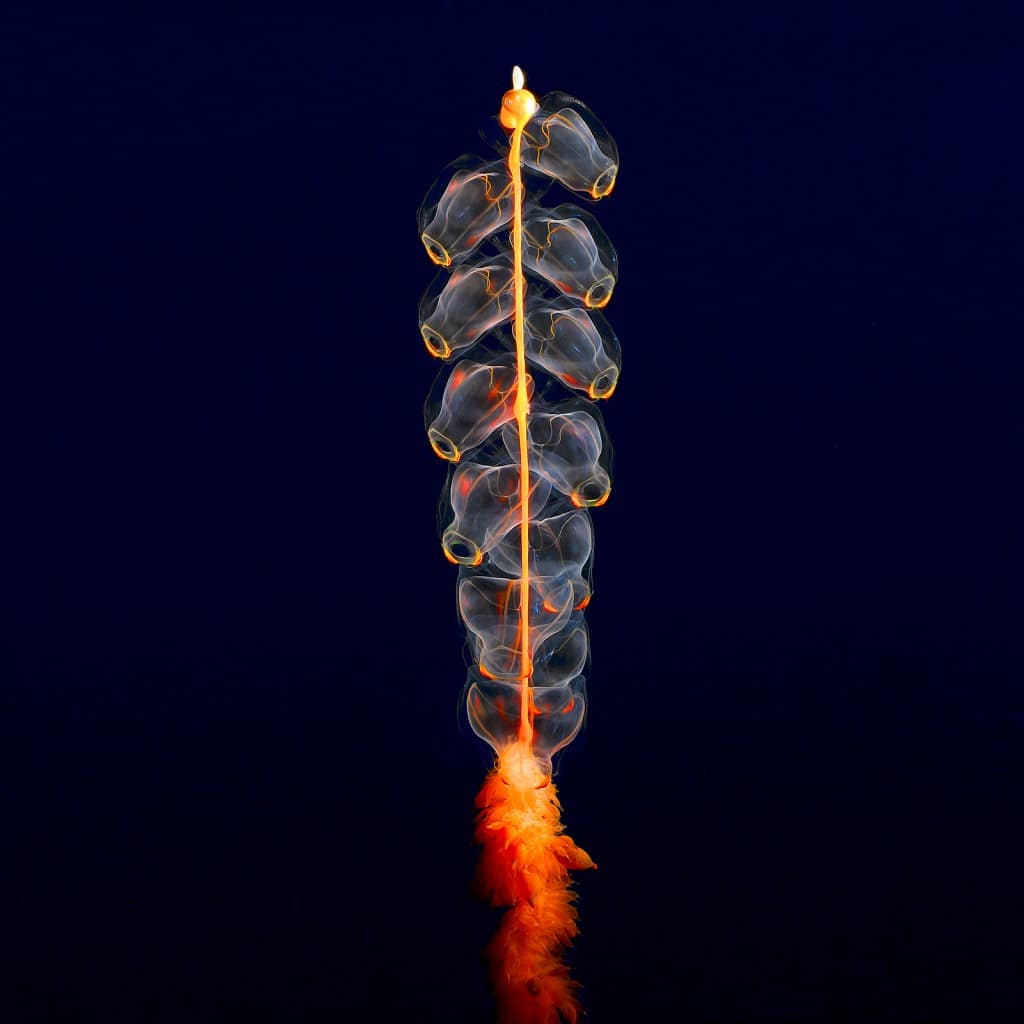
This strange aquatic animal (animals?) is a collection of polyps and other creatures that contract and expand in concert, thereby propelling the micro-organism through the frigid Arctic waters. It is kind of like a rocket that functions in stages, and its tail even resembles the exhaust of rocket fuel.
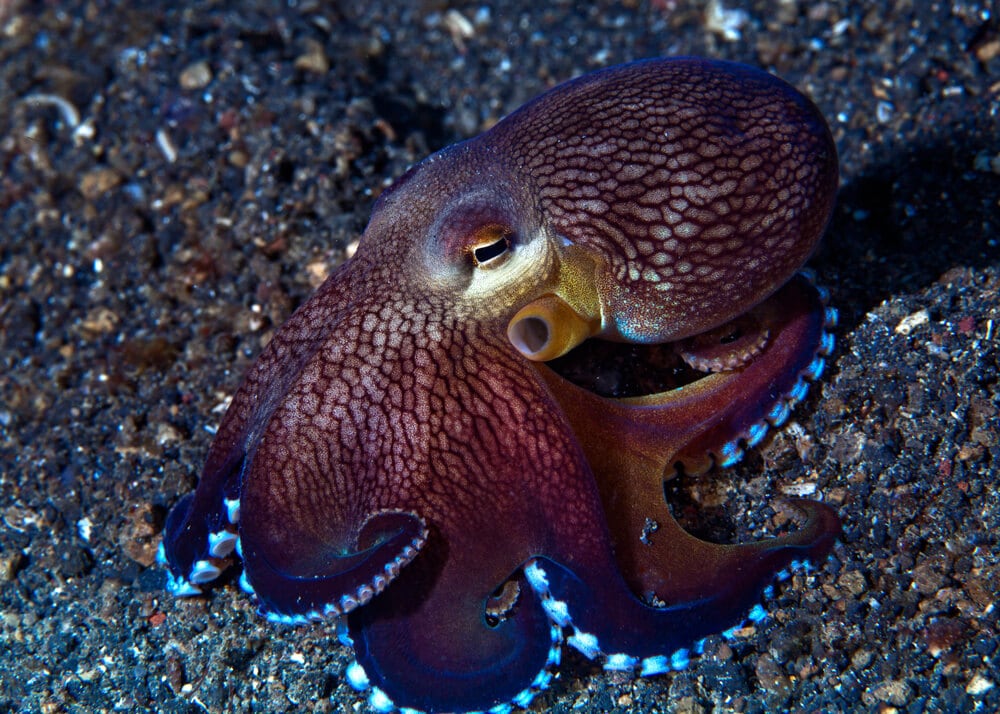
One Kind Of Octopus Lights Up Like A Christmas Tree
Bioluminescence is a characteristic of a few marine animals, in which they can light themselves up, seemingly at will. They contain particles called photophores, which emit light, almost like when the lights on a Christmas tree are turned on and off.
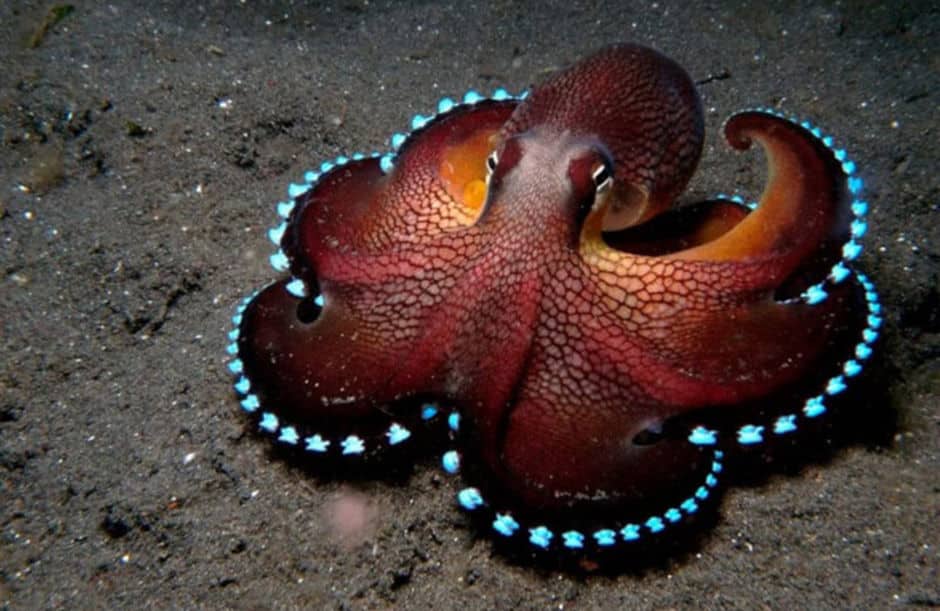
The bioluminescent octopus has been seen off the coast of Maine, in the northeastern United States. Scientists believe that by lighting up the underside of its tentacles, it can fool prey so that they swim straight into its mouth.
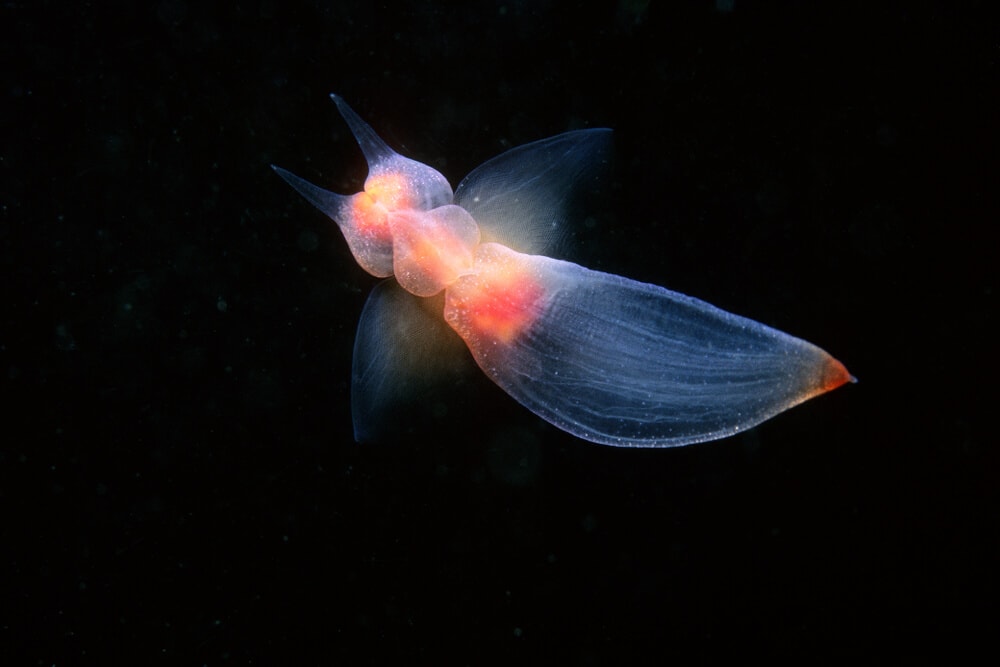
Sea Angels Are Predators
Have you ever read the writings of the Greek poet Homer? You are probably familiar with sirens, the mythological creature from which mermaids probably derived. One might expect that sea angels are somewhat similar to mermaids, that is if mermaids are real at all.
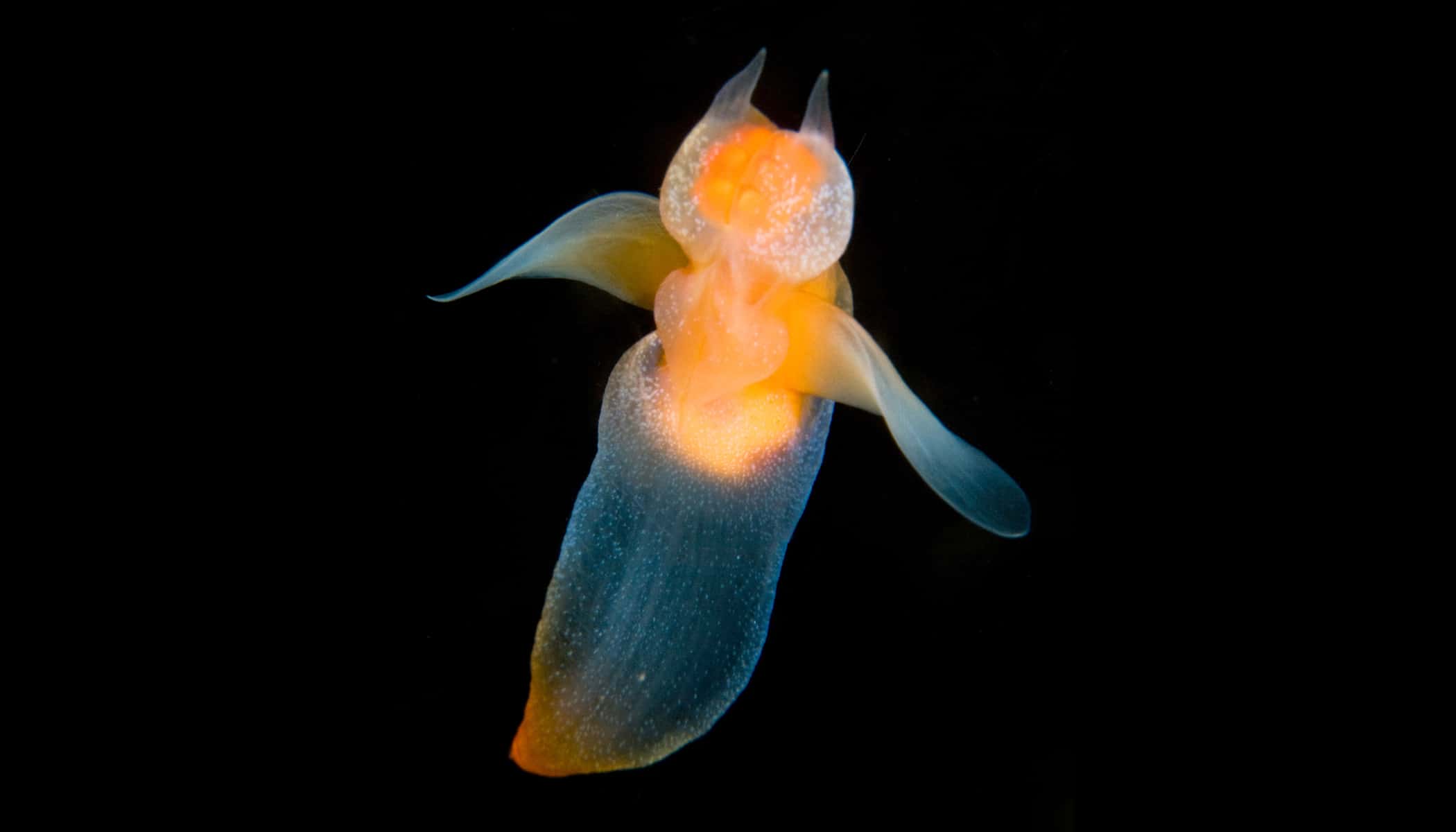
But real sea angels may be more akin to the ghastly and terrifying Harry Potter mermaids, as they are predators! They feed on sea snails that live in the cold Antarctic waters. You could say that they are cannibals, as sea angels are a type of sea snail themselves. So they aren’t angels in any sense, but they sure are elegant to look at nonetheless.
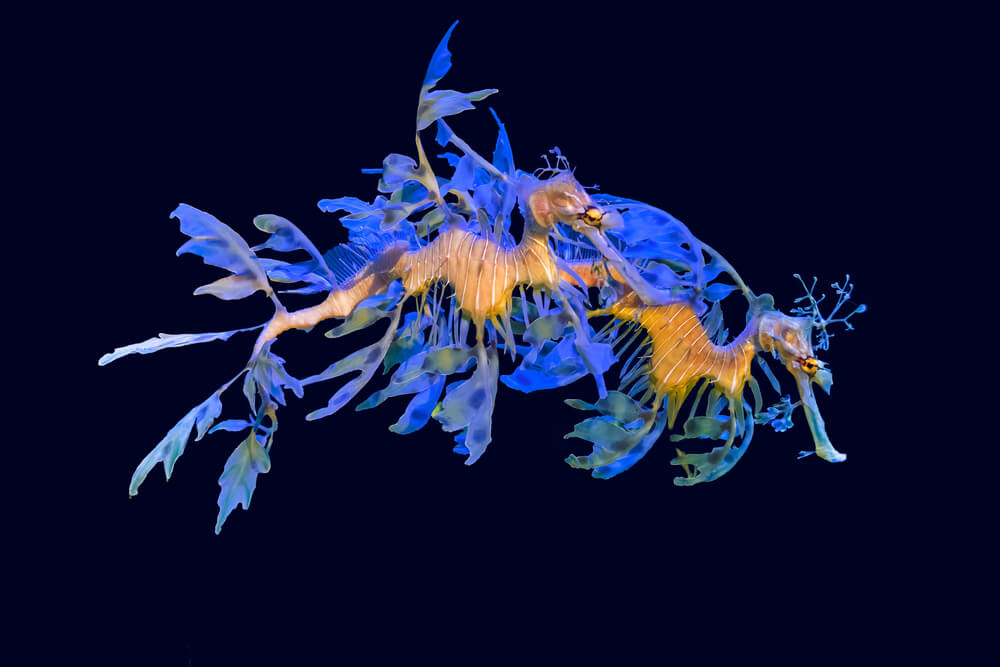
Leafy Sea Dragons Are Like Seahorses On Steroids
Seahorses are cool. They are a strange type of fish with a head that looks like it could belong to a horse. The males, rather than the females, are the ones to get pregnant, and they can have brilliant designs that rival many land creatures.
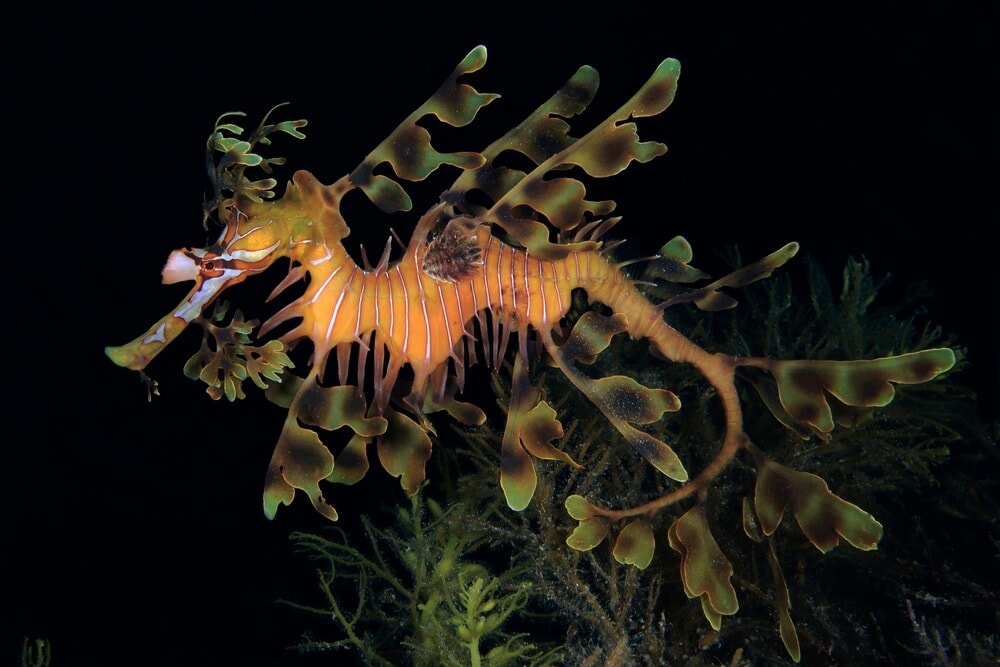
Leafy sea dragons are even cooler. They live off the coast of Australia and are covered with appendages that look like drifting seaweed. This appearance is natural camouflage, as many would-be predators are much less interested in seaweed than they are in a nice, meaty snack.
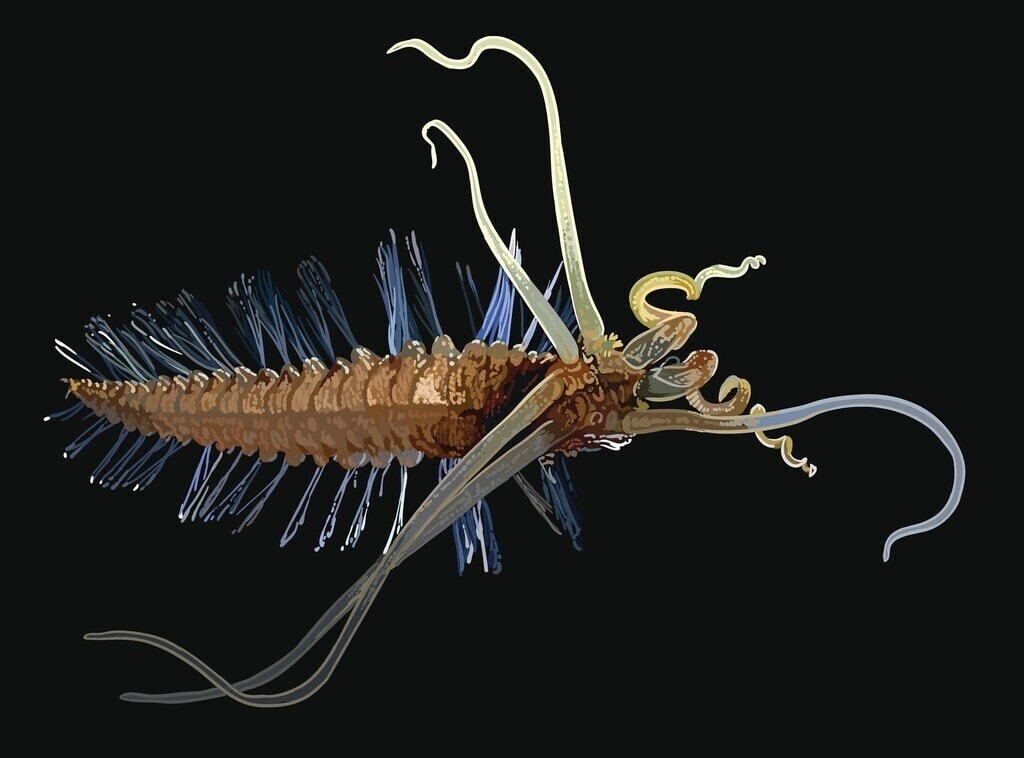
The Squid Worm Lives Half A Mile Underwater
Fans of SpongeBob may be at least a little bit tempted to call this funny-looking creature a Squidward, but it is a squid worm. Squid worms were only discovered in 2010, during explorations off of Indonesia. They live about 3000 feet underwater.
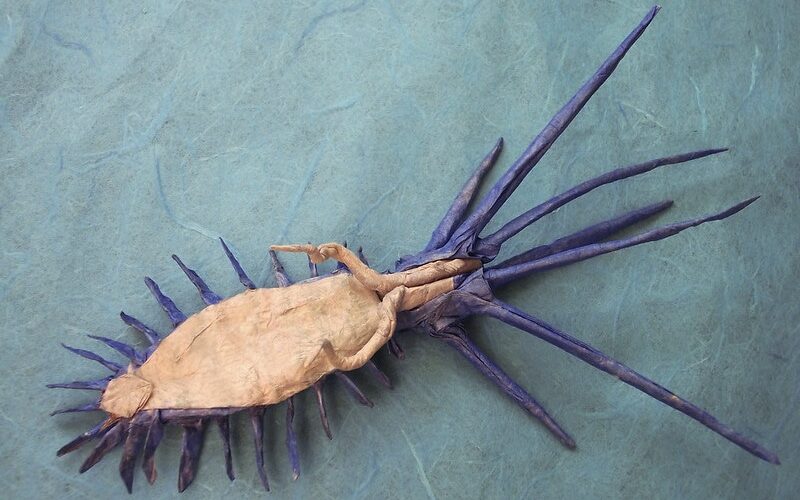
This worm pretty much rises and falls with the ocean currents that pass through, feeding on algae and plankton. It is usually about 9 centimeters long, though there could be plenty of other specimens that are significantly smaller or larger. They were only recently discovered, so scientists have a lot more to learn about them.

Vampire Squids Are Real
Forget the giant squids that Medieval sailors spun long yarns about centuries ago. The vampire squid, which lives off of Monterrey, California, takes the cake here. Its eyes are terrifying enough – they are red, though they can sometimes appear blue, giving the creature the otherworldly appearance of a vampire.
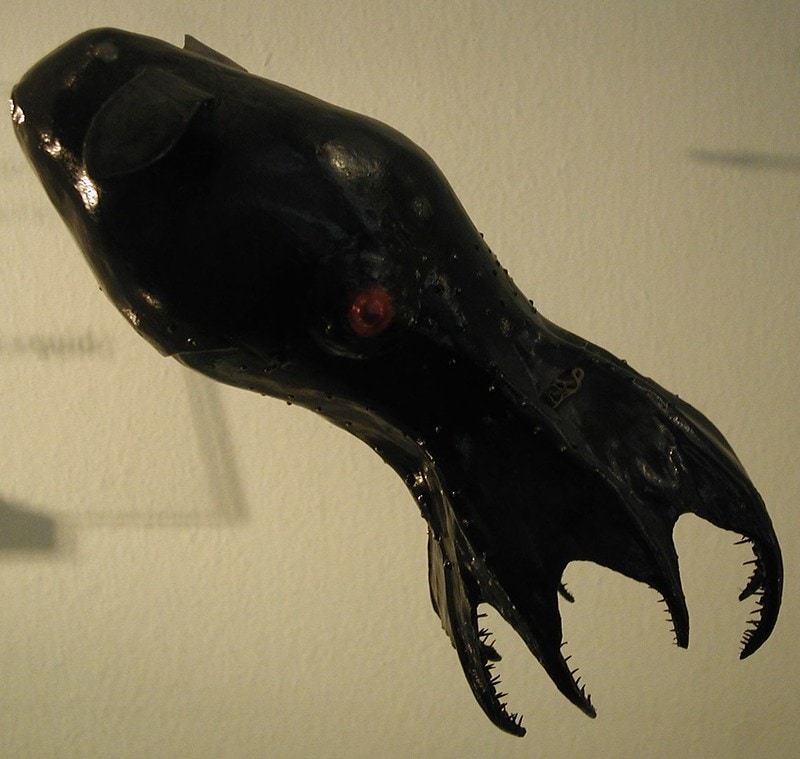
But even more terrifying is the talon-like appendages on the tentacles, which aren’t sharp but certainly look terrifying. And the skin that envelopes the tentacles resembles a cape that Dracula himself would wear. To make this creature seem a bit less terrifying, it is certainly no giant squid: vampire squids are only about one foot long.
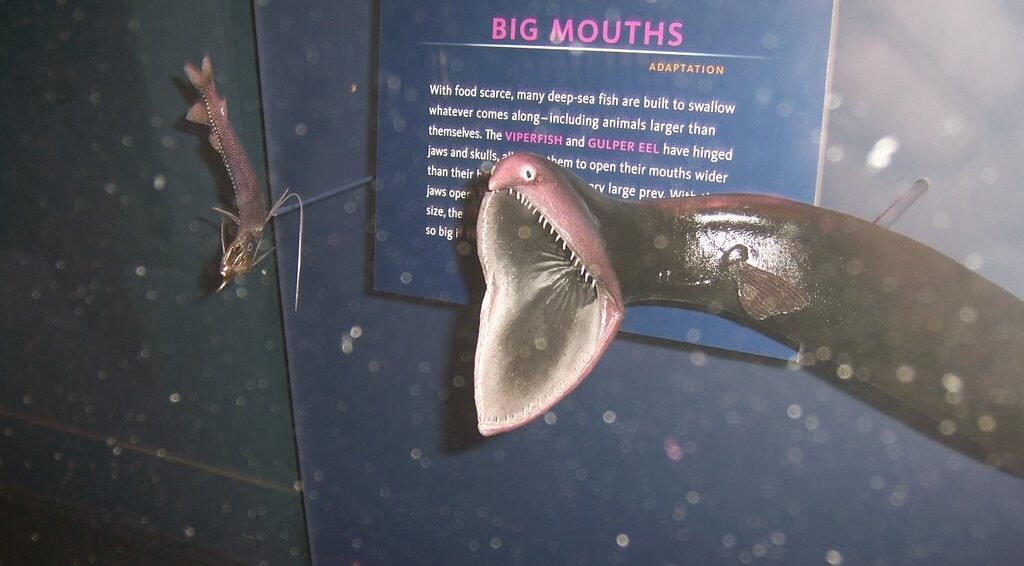
Gulper Eels Look Like Terrifying Sea Monsters
Gulper eels are aptly named – you can see in the picture how big their mouths are relative to the rest of their bodies! Like other eels, they look like underwater snakes, with long, slender body that allows them to swim freely through the ocean.
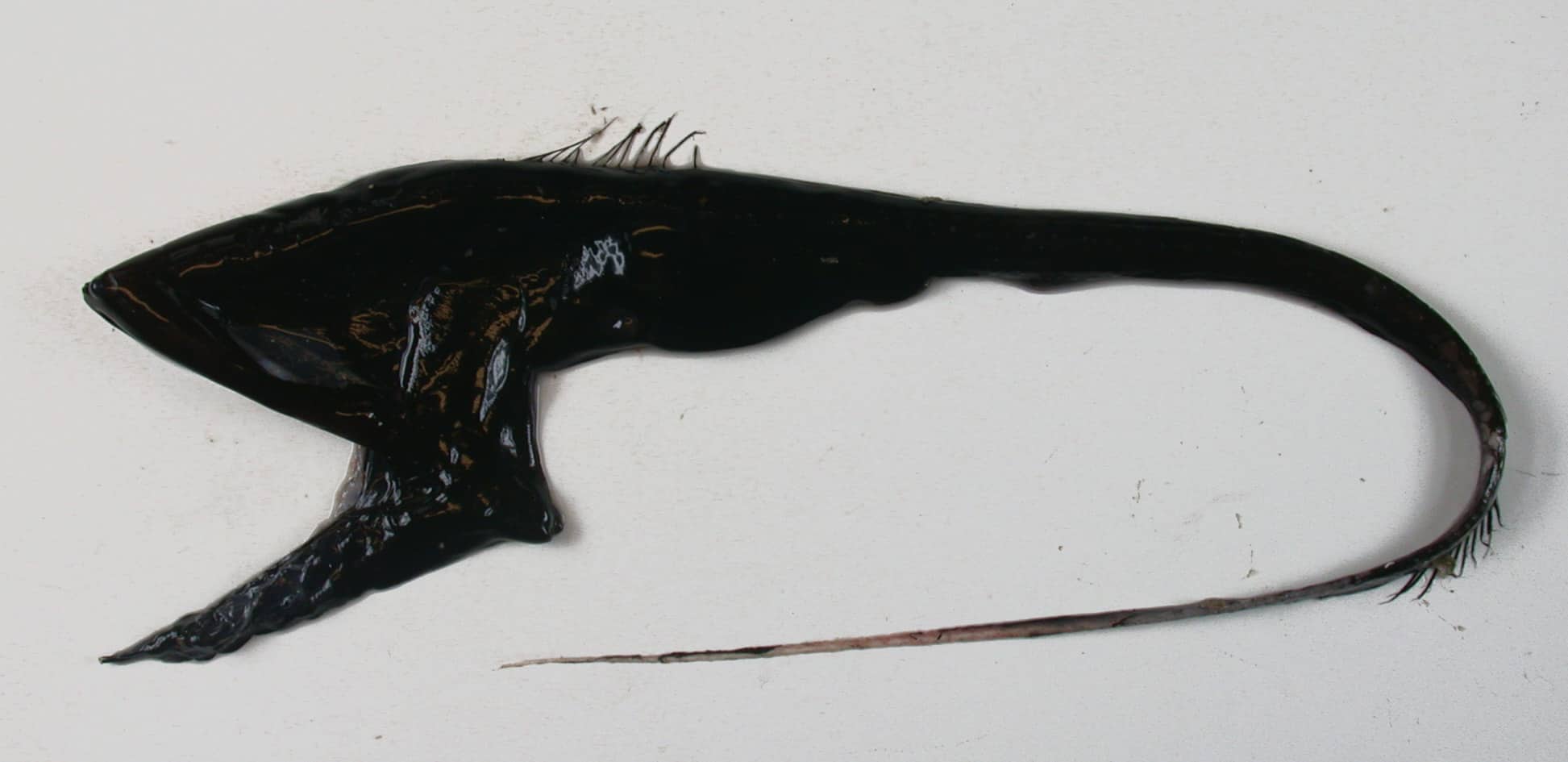
What sets these creatures apart is that their massive mouths can swallow prey the size of an adult human. They are about six feet in length, about the size of an adult male, and may have evolved such largemouths to enable them to consume more food during times of scarcity.
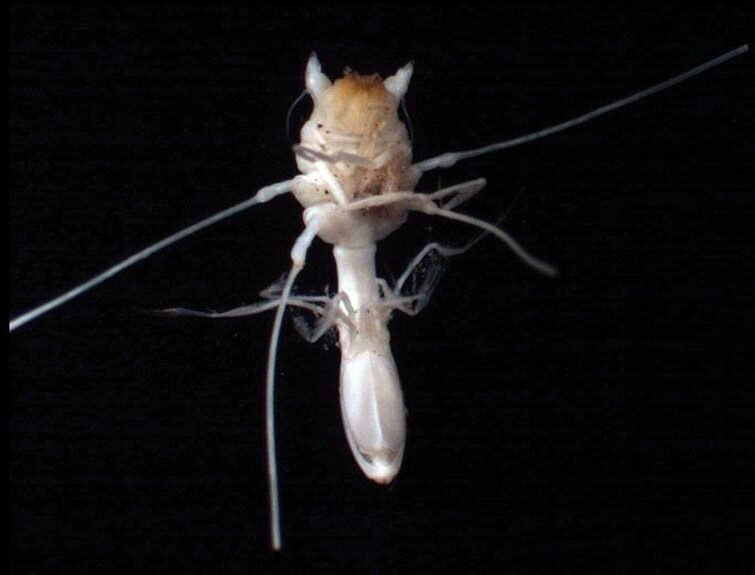
The Munnopis Isopod Has Seven Pairs Of Legs
This underwater creature is at least 300 million years old and is in the deep waters of the Southern Ocean. And yet we have to wonder why an underwater bug would need seven sets of legs to get around when it is swimming thousands of feet below the surface of the ocean.
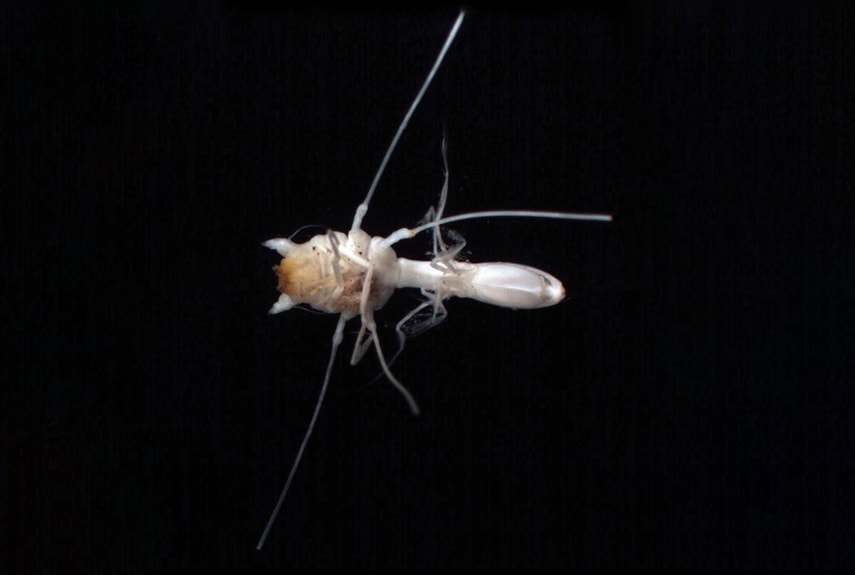
Munnopis isopod may be somewhat related to the land-loving pill bug, something that readers are probably much more familiar with right now. Nevertheless, scientists are stumped with this stranger creature. However, there are many facets of the deep ocean that they don’t know much about yet. That world is straight-up bizarre.
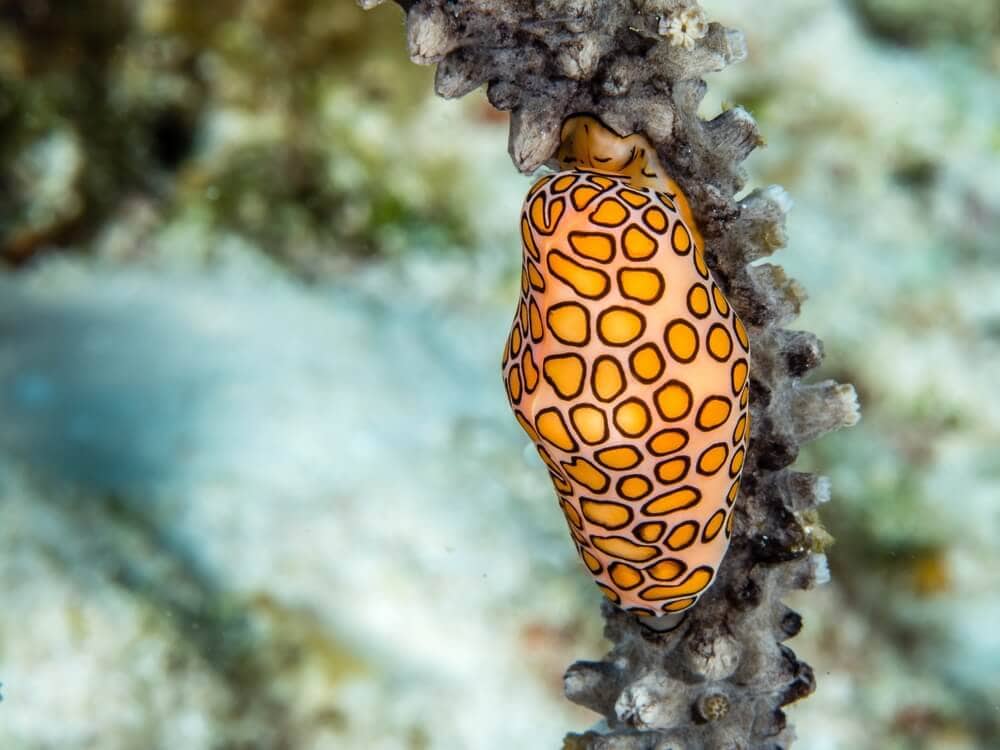
Flamingo Tongue Snails Have Less-Than-Gnarly Shells
The flamingo tongue snail is a marine oddity that lives in the Caribbean, especially off the shores of the Cayman Islands. This sea snail has brilliantly speckled skin and a pretty dull, blasé shell that isn’t worth collecting. The skin covers the shell but can be retracted at will.
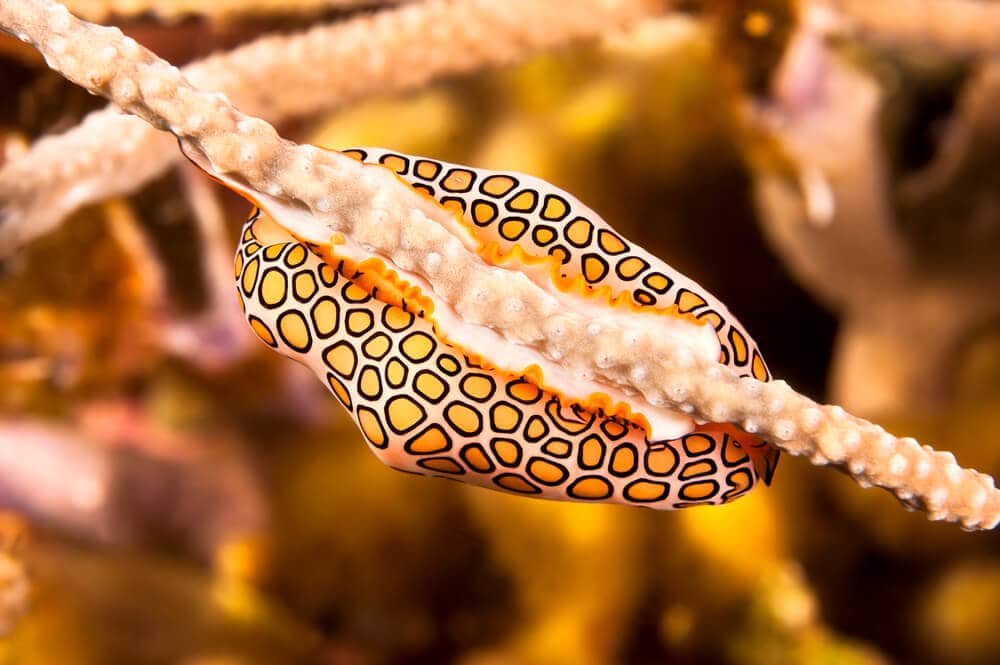
Flamingo tongue snails used to thrive in large numbers, but their populations have been dramatically reduced due to human tourism and the effect that humans have had on the environment. To help protect this species, if you visit the Caribbean and come across one, leave it alone.
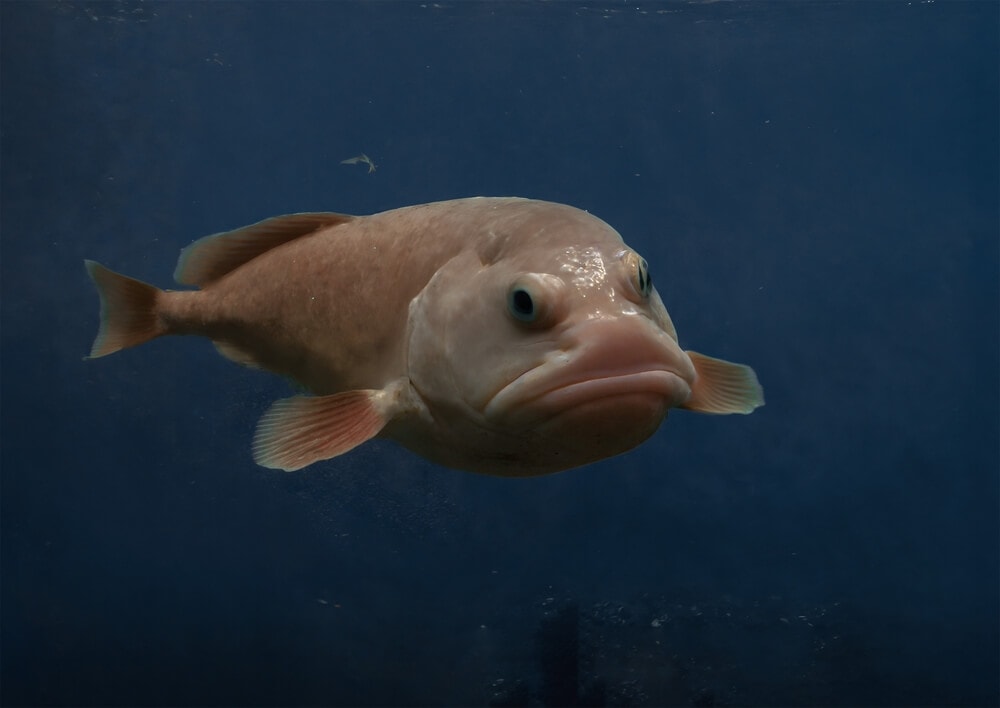
There Is A Fish Called A Fathead
The blobfish certainly looks like one giant, pale blob, but some scientists prefer to call it by a more colloquial name: the fathead. Fathead was caught off the coast of New Zealand in 2003, and the specimen was kept in a 70% alcohol solution while scientists tried to learn what they could about these strange creatures.

In the time since, the fathead has been popularly voted as the ugliest animal in the world. While these creatures may be endangered, they often turn up in the fishing nets of trawlers in the waters off of New Zealand. Due at least partly to fathead’s ugly appearance, the fisherman sees little reason to throw the fish back into the water.
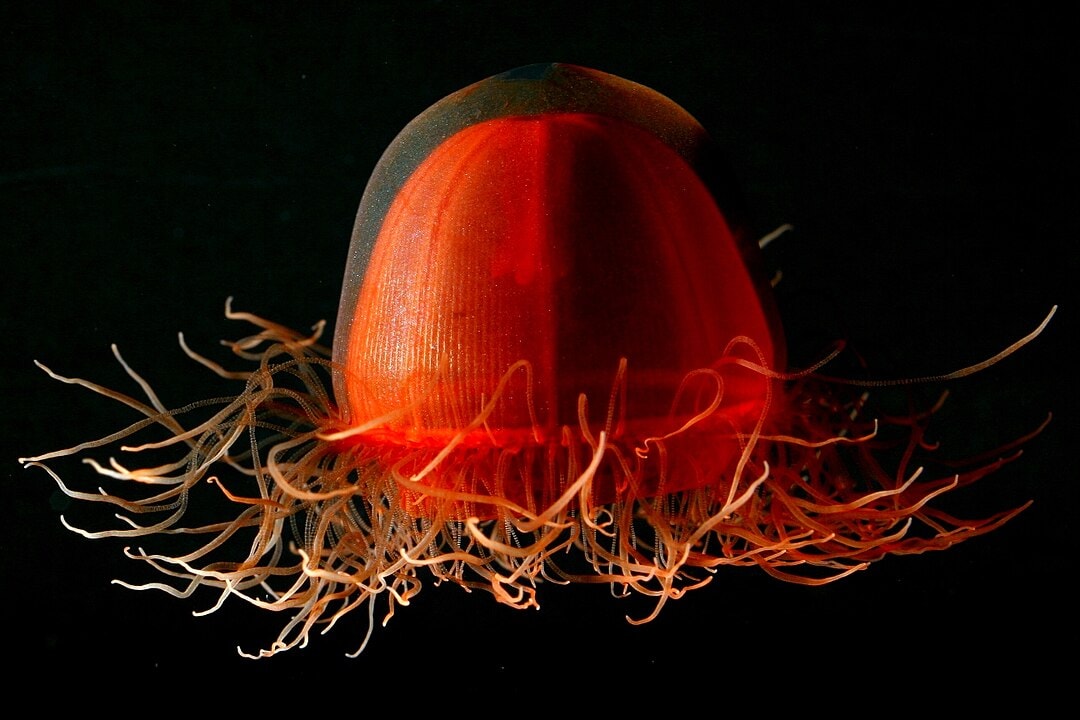
Crossota Norvegica Jellyfish Has Hundreds Of Tentacles
This elegant jellyfish lives in deep waters in the Arctic Ocean, preferring frigid polar temperatures to the warmer climes that many other jellyfish enjoy. And Crossota Norvegica has an elegance that other kinds of jellyfish would envy – if they had brains that they don’t.
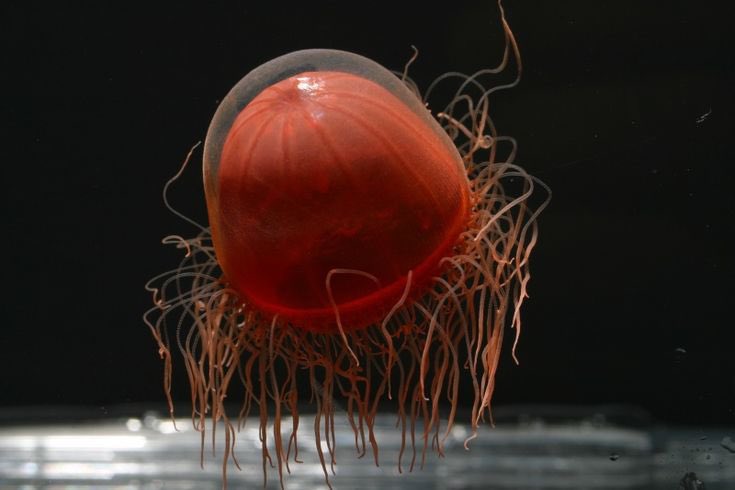
For starters, Crossota Norvegica has between 200 and 300 tentacles, compared to the roughly dozen or so of many other kinds of jellyfish. So suffice it to say that you do not want to touch one! It is also a deep red color with more radial tubes for feeding and digestion than other kinds of jellyfish.
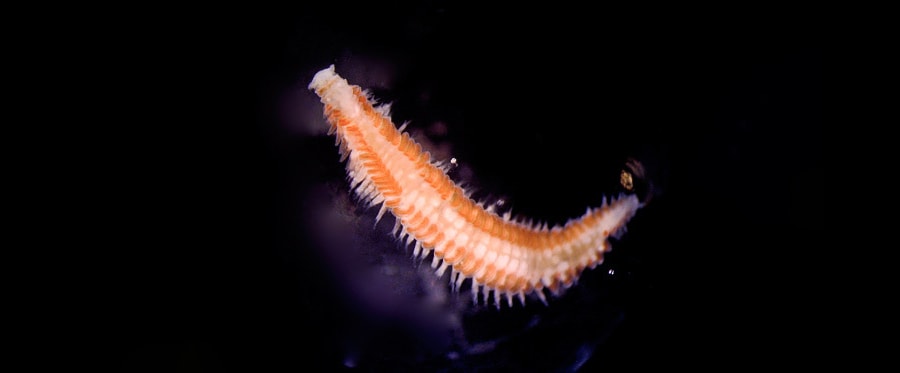
Vigtorniella Worms Feast On Whale Carcasses
When animals die, there are usually scavengers that eat up the carcass before it rots. On land, vultures perform this very necessary duty. And in the sea, especially in the waters around Japan, there are Vigtorniella worms to clean up dead marine animals. Yes, there are many kinds of sea worms, and they are not all that different from their terrestrial relatives.
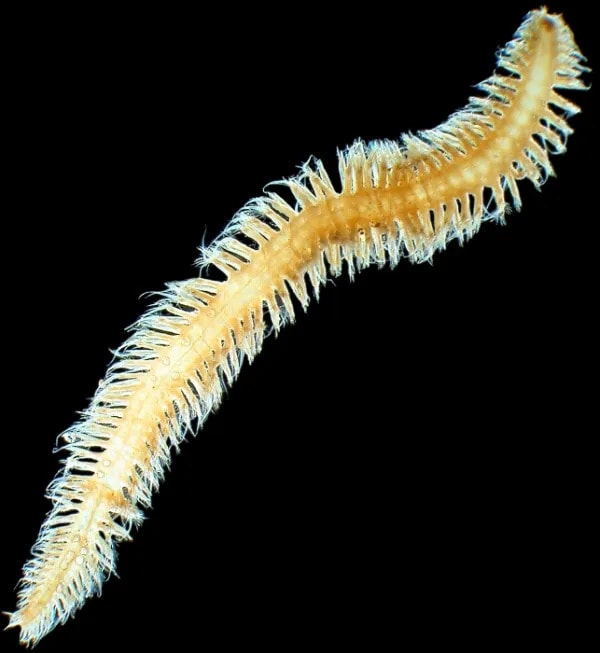
Vigtorniella worms feast on really, really big marine animals. Like whales. When whales die, these underwater scavengers feast on their carcasses. Vigtorniella worms are also covered in bristles – possibly to aid in sweeping up the messes of dead sea creatures?
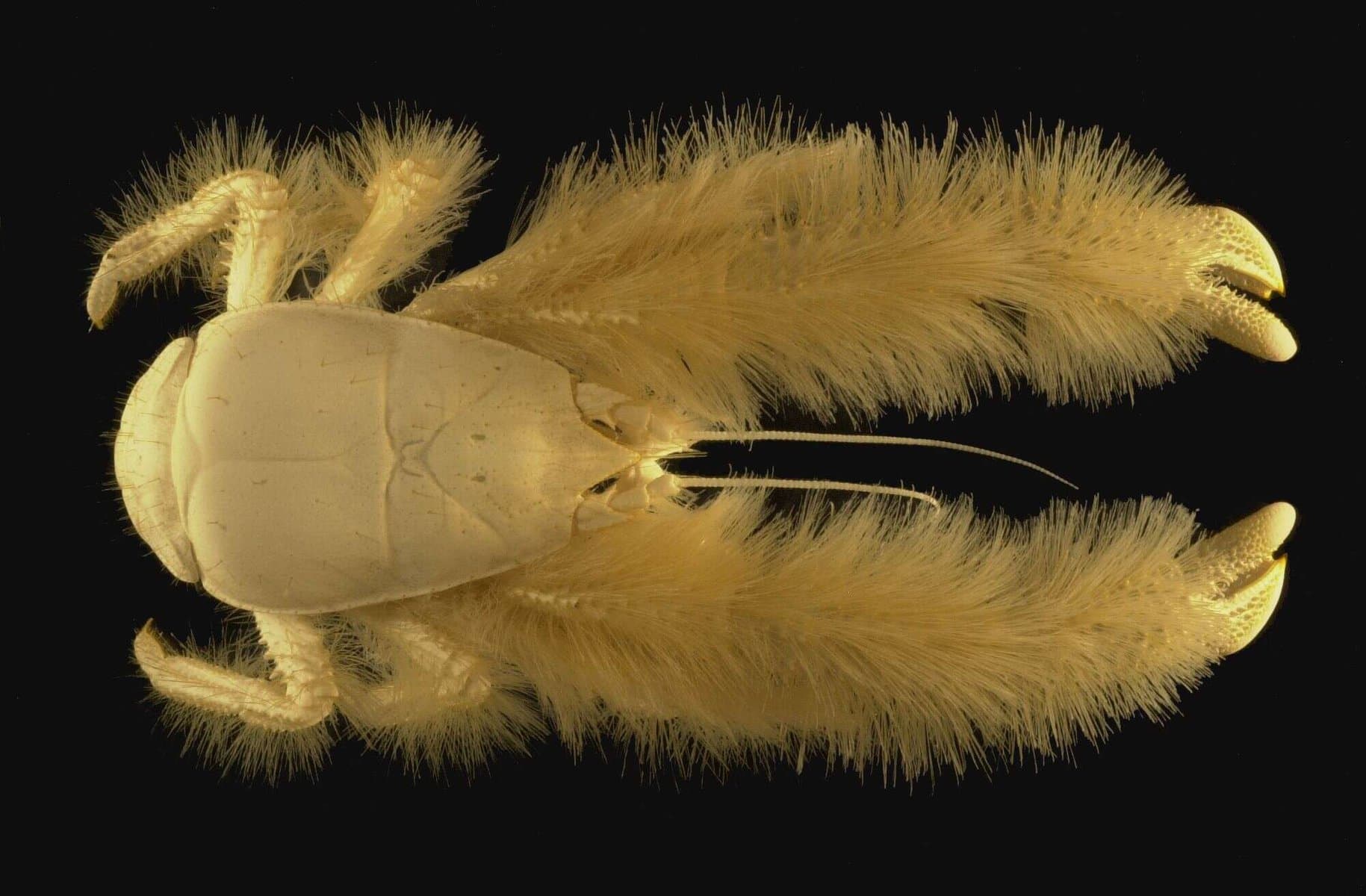
The Kiwa Crab Is The God Of Shellfish
Have you heard of the yeti crab, so-called after the mythological creature that haunts snowy mountains in North America? Well, this is it. Scientists discovered this creature in the deep ocean vents off of Easter Island, 5000 feet underwater.
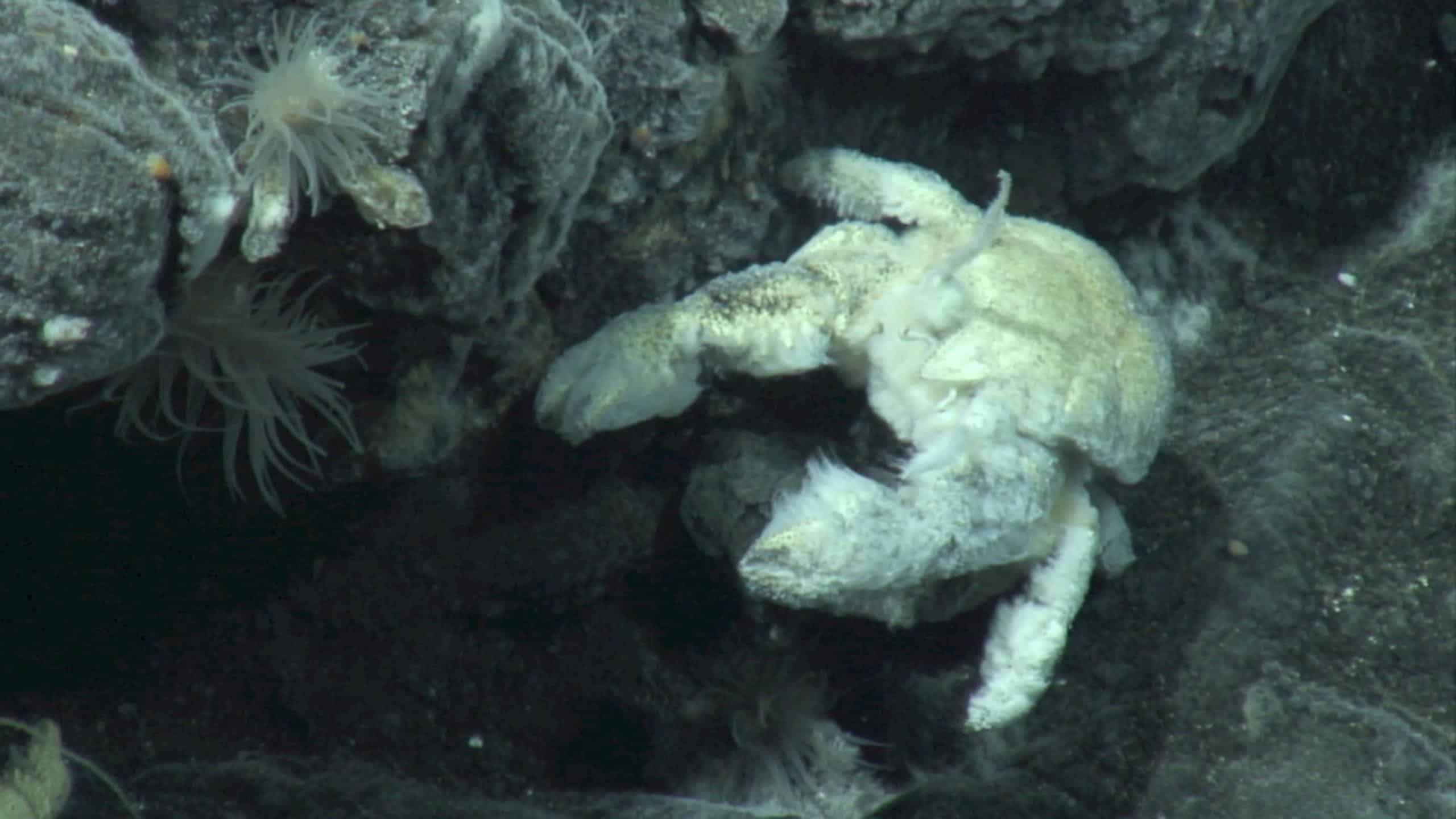
They named it the kiwa crab after the Polynesian god of shellfish, but it became known as the yeti crab because of its furry claws. The kiwa crab was so unlike any other animal that scientists have found they designated a new family of species, kiwidae, to classify it.
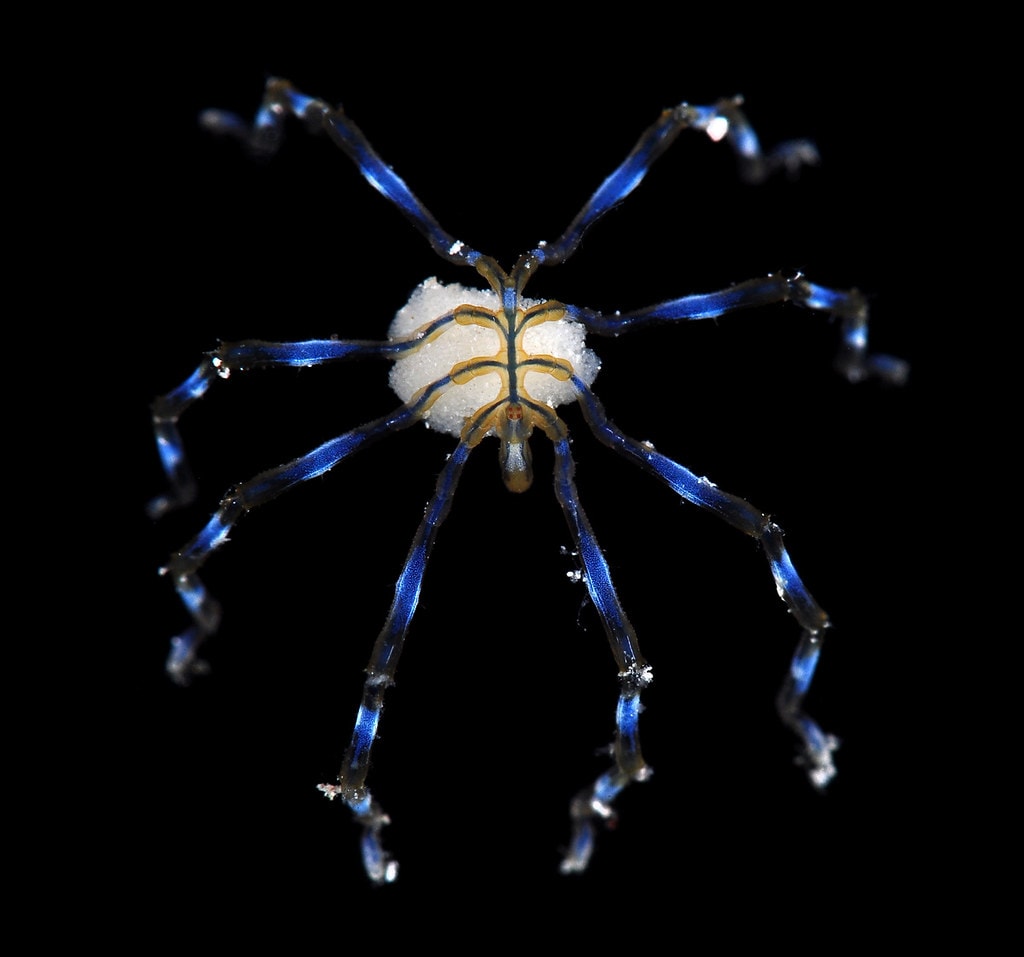
Some Sea Spiders Are Scarier Than Others
Pycnogonids, or sea spiders, are a diverse group of underwater animals that, like their terrestrial cousins, have eight legs. But they swim, and some can be much bigger than the spiders that you may be used to seeing. Deepwater species of sea spiders can get nearly two feet long!
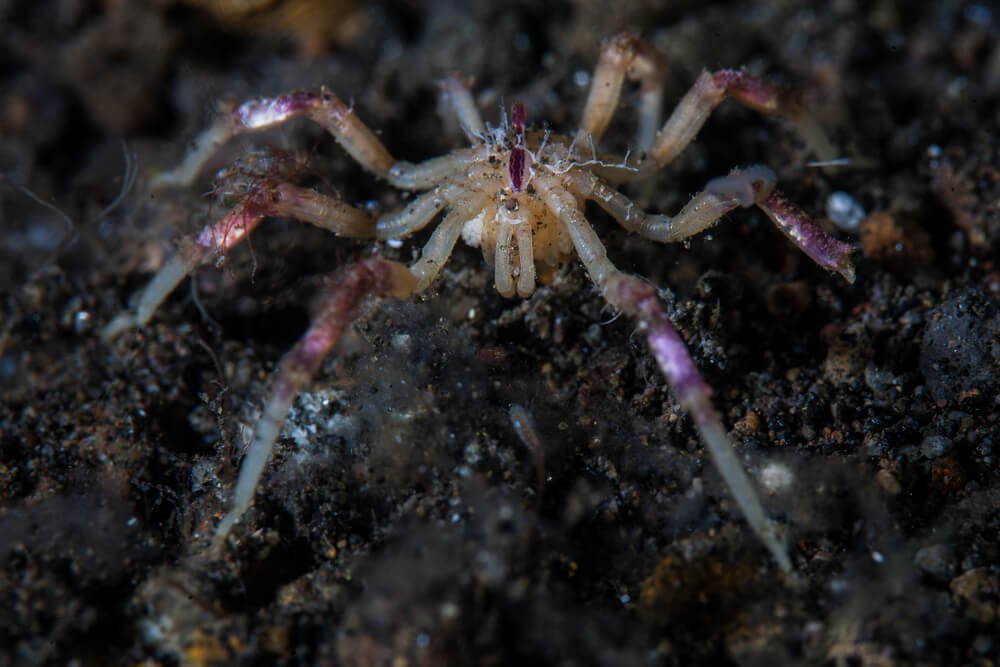
Like many terrestrial spiders, sea spiders suck the blood of their prey. Unlike terrestrial spiders, the digestive and reproductive systems of sea spiders are outside of their bodies! Male sea spiders carry the eggs and tend to the parenting duties.
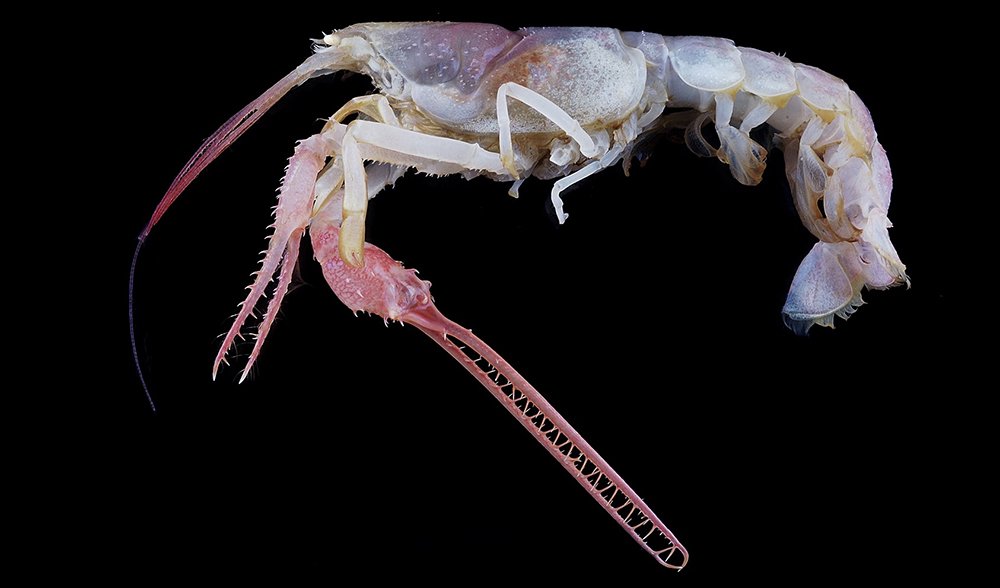
The Terrible Claw Lobster Is Aptly Named
The Dinochelus ausubeli lobster, also known as the “terrible claw lobster,” certainly does look like a cross between a dinosaur and a lobster that you do not want to come into contact with ever. But the creature is much less terrifying than its picture might have you believe?
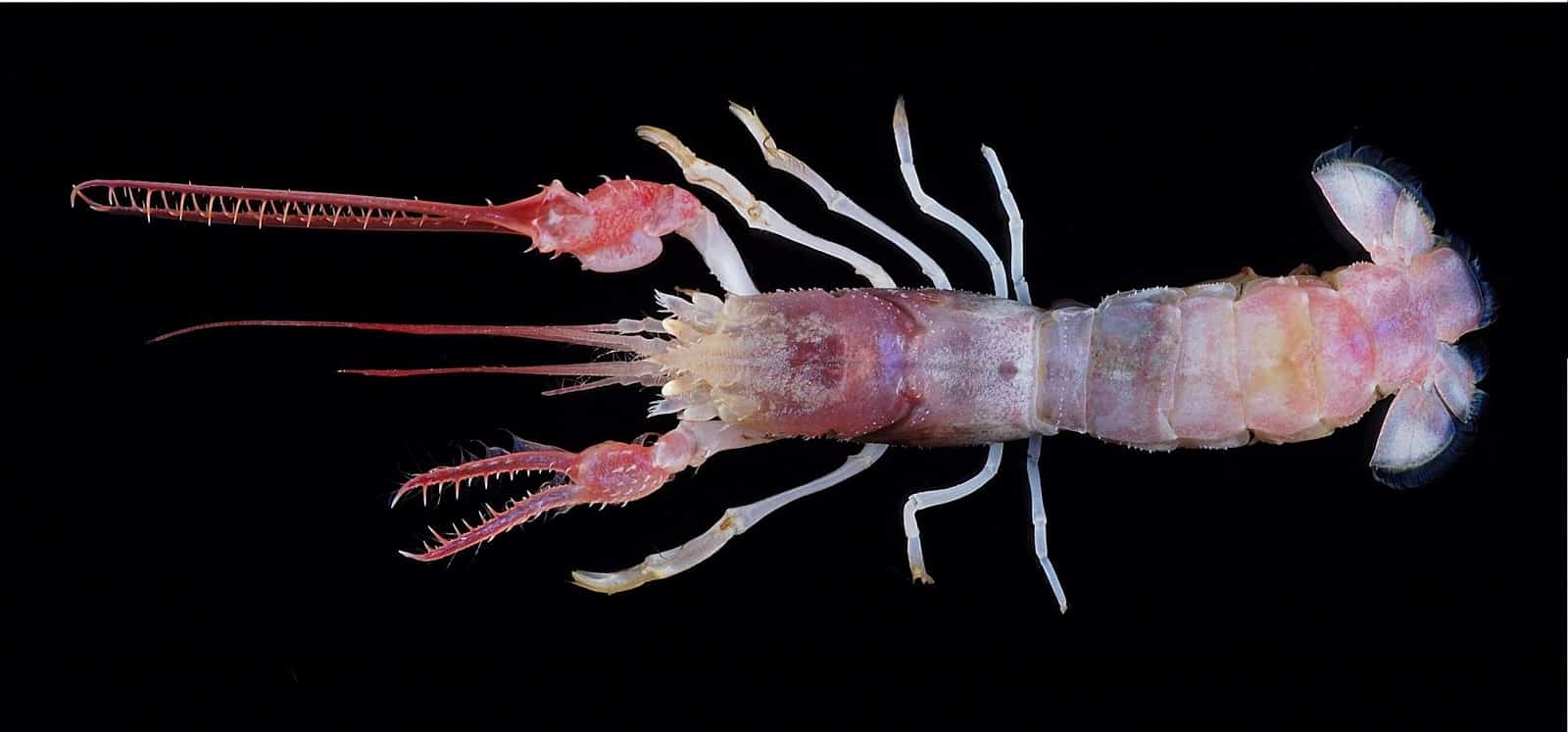
Why? Because it is only about three inches long, and it lives deep underwater. The shallowest depth at which the terrible claw lobster has been found is over 800 feet down, so you probably won’t run into one anytime soon. They are also extremely rare, so if you do find one, make sure you take notice!
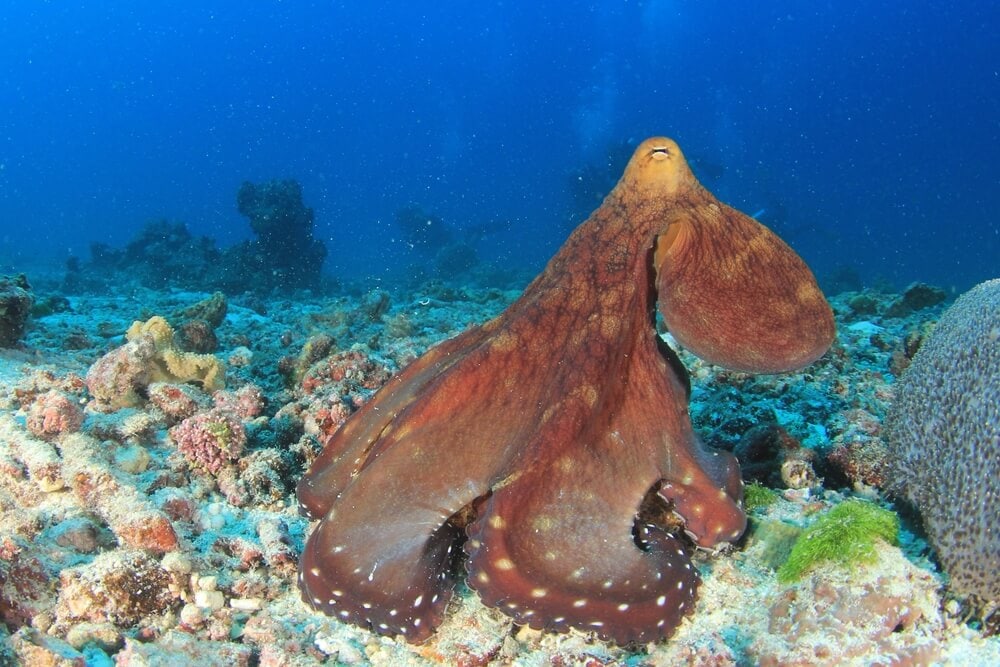
The Dumbo Octopus Swims With Its Ears
Do you remember the drug-infused movie Dumbo, which featured a baby elephant with ears that only a mother could love? Meet Dumbo’s underwater cousin, the dumbo octopus. This cephalopod has eight tentacles, just like any ordinary octopus.
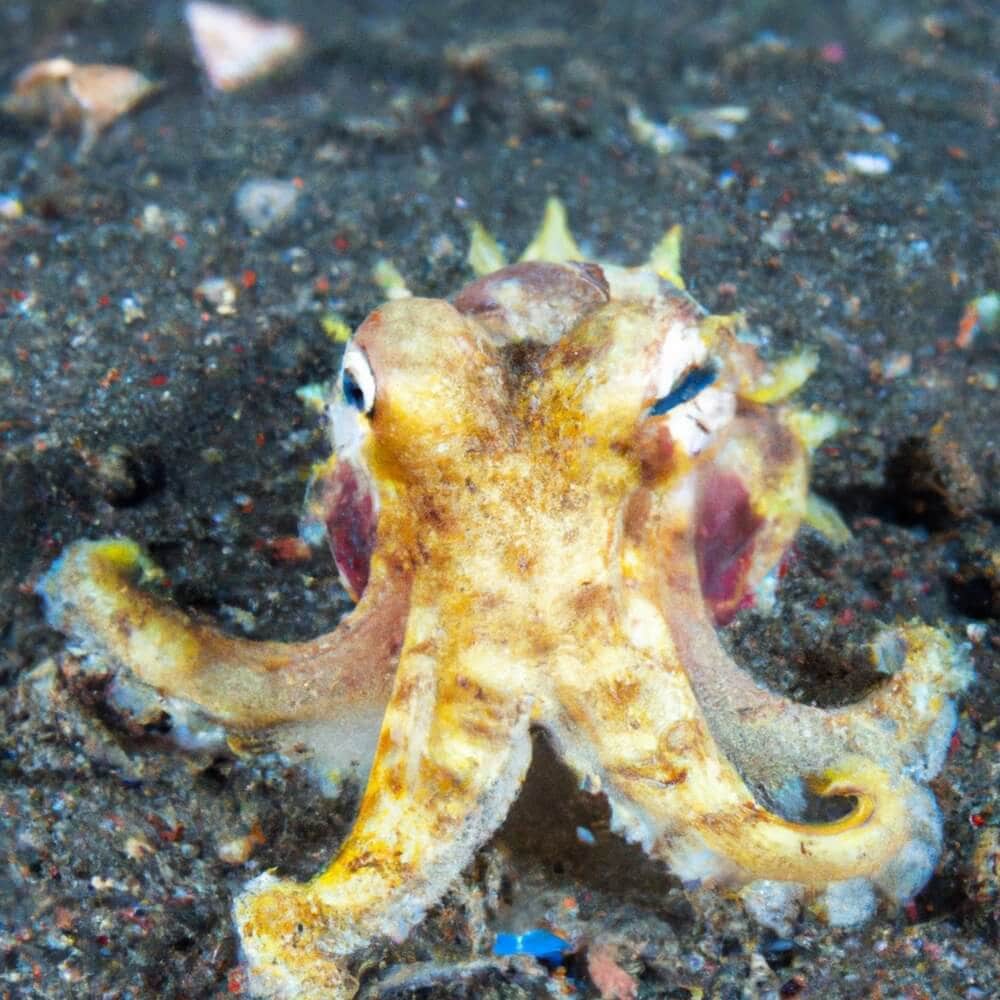
What sets the dumbo octopus apart is its ear-like appendages. Just like Dumbo the Elephant used his ears to fly, the dumbo octopus uses its ears to soar through the ocean’s depths. The dumbo octopus lives over the Mid-Atlantic Ridge, a giant underwater mountain chain that dwarfs the Himalayas.
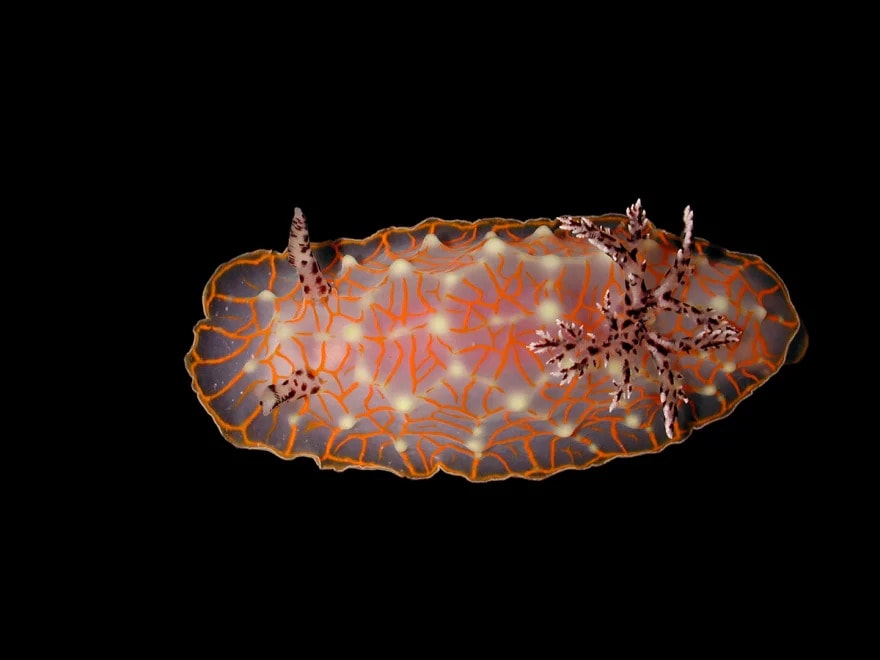
The Golden Lace Nudibranch Is Like A Snail Without A Shell
On land, we think of slugs as basically snails that do not have a shell. But this underwater anomaly, the golden lace nudibranch, is a type of mollusk that has a shell early in life but then sheds it. So it is basically like the part of a mussel that you eat, but it lives most of its life without the hard armor that the shell of a mussel provides.
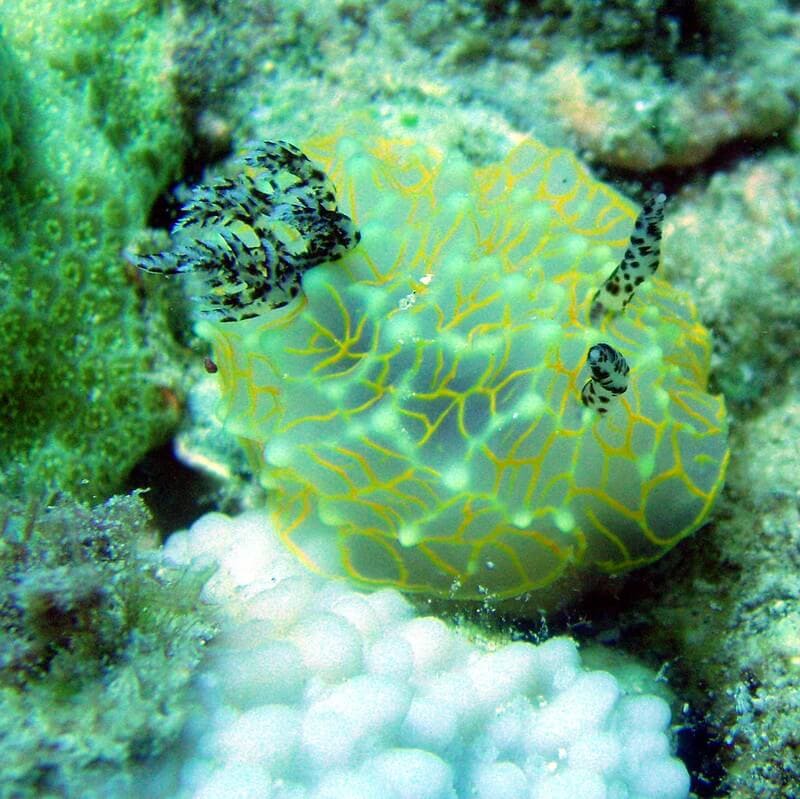
So, in other words, nudibranch mollusks are nude. They live in Hawaii at relatively shallow depths, about 30 feet underwater. They are also quite small, maxing out at about five centimeters in length. Despite their small size, they are carnivores that feed on soft organisms, such as sea sponges.
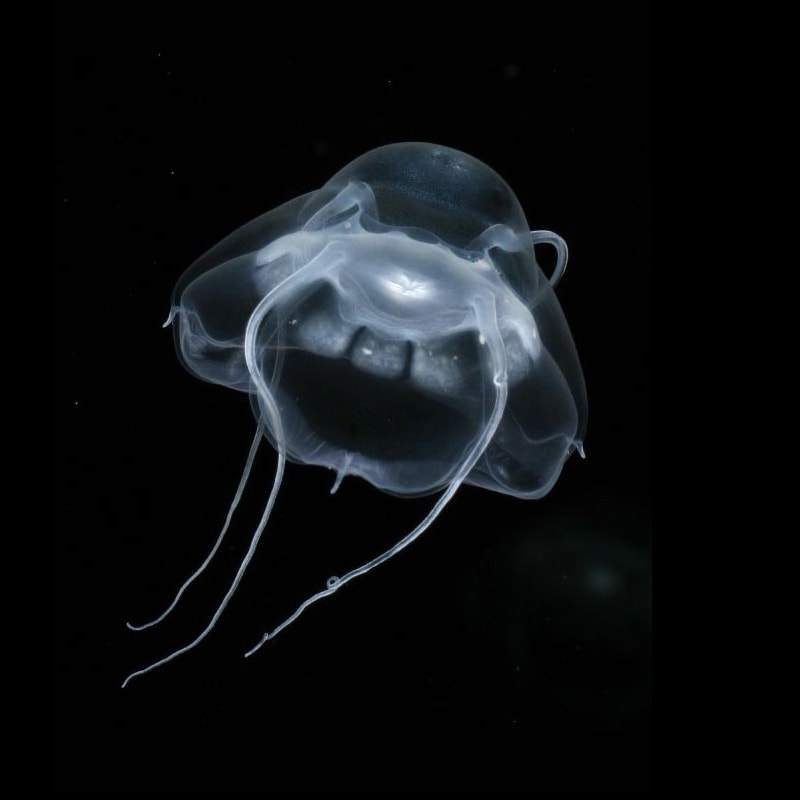
Arctic Hydromedusa Are Not Like The Mythological Medusa
The mythological Medusa was a beautiful woman who was transformed into a monster with snakes for hair; anyone who looked at Medusa would turn into stone. The story is nice and lends itself to the snake-like tentacles that emerge from the “head” of this would-be jellyfish.
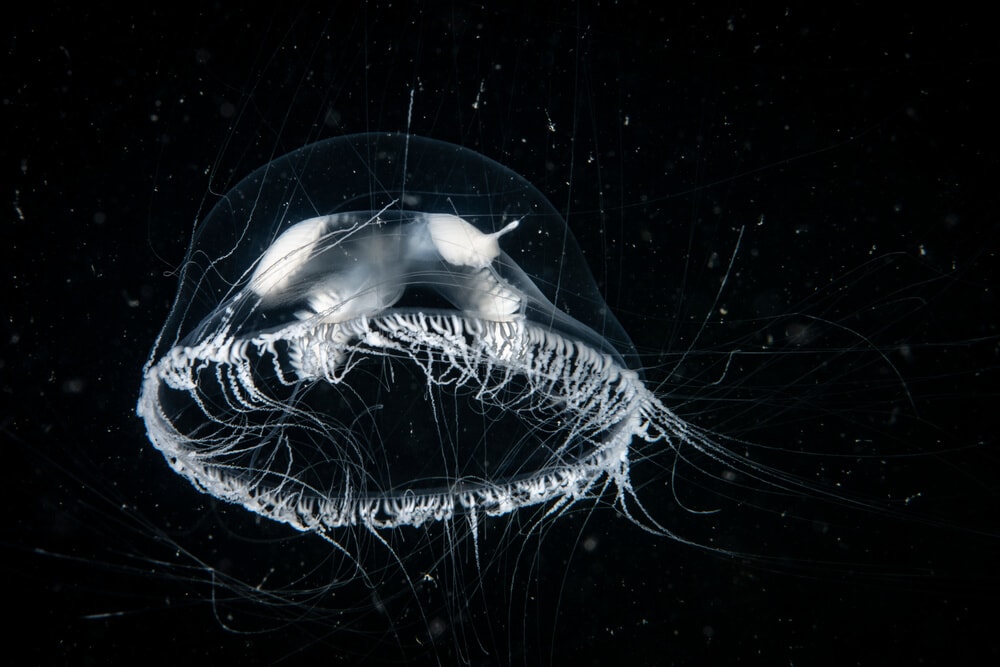
The Arctic Hydromedusa (water medusa) looks a lot like a jellyfish and propels itself through the frigid Arctic waters the way that a regular jellyfish would. What distinguishes this particular creature from a true jellyfish is how they produce its eggs.
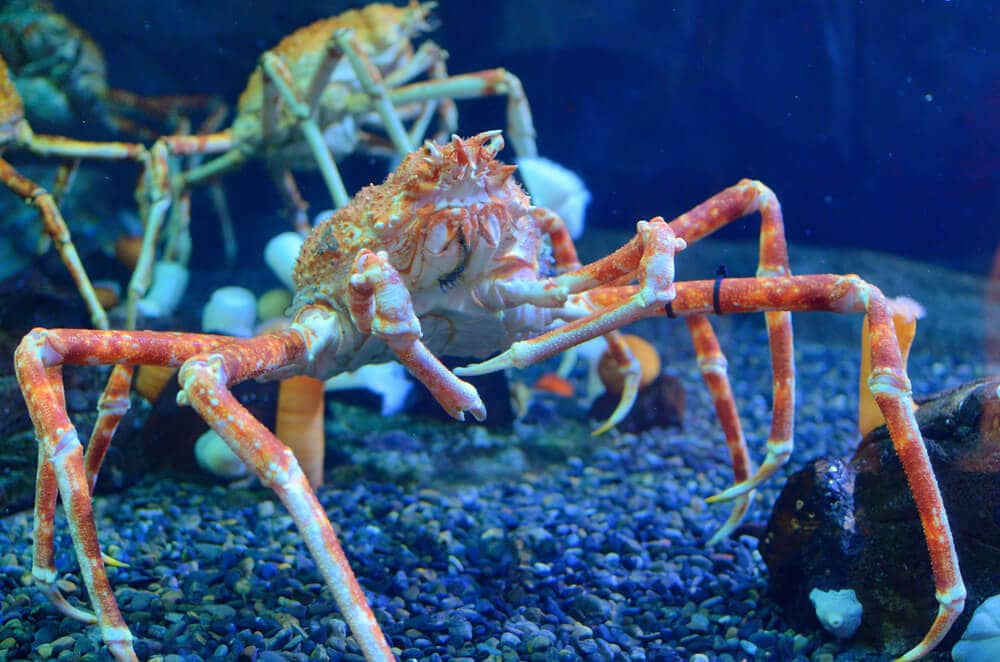
Japanese Spider Crabs Are Enormous Underwater Scavengers
Japanese spider crabs look like a cross between a crab and a spider, or more accurately, an acromantula from the Harry Potter series. They live off the coast of Japan and grow up to be 12 feet long! Imagine swimming on the beach and coming across a spider-like crab of that size.
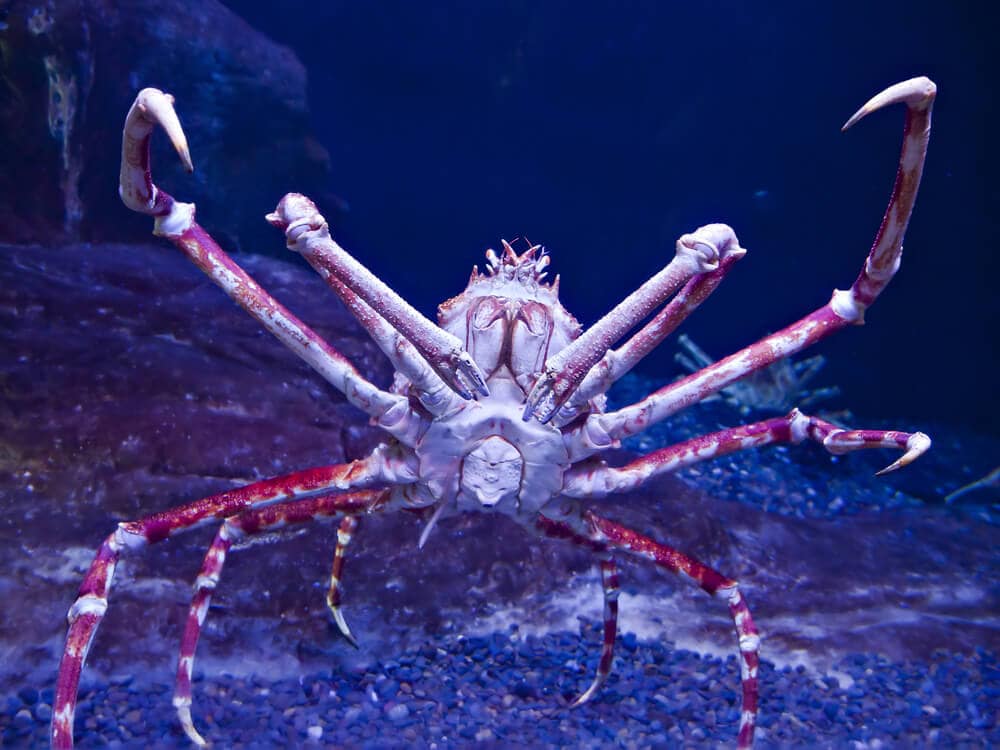
However, the stalwart Japanese people are not afraid of these undersea monsters. They enjoy eating them as a delicacy. Furthermore, the Japanese spider crab serves an essential purpose in its underwater ecosystem: it is a scavenger that feeds on the bodies of dead marine animals. So it is a living underwater filter that helps keep the ocean clean.
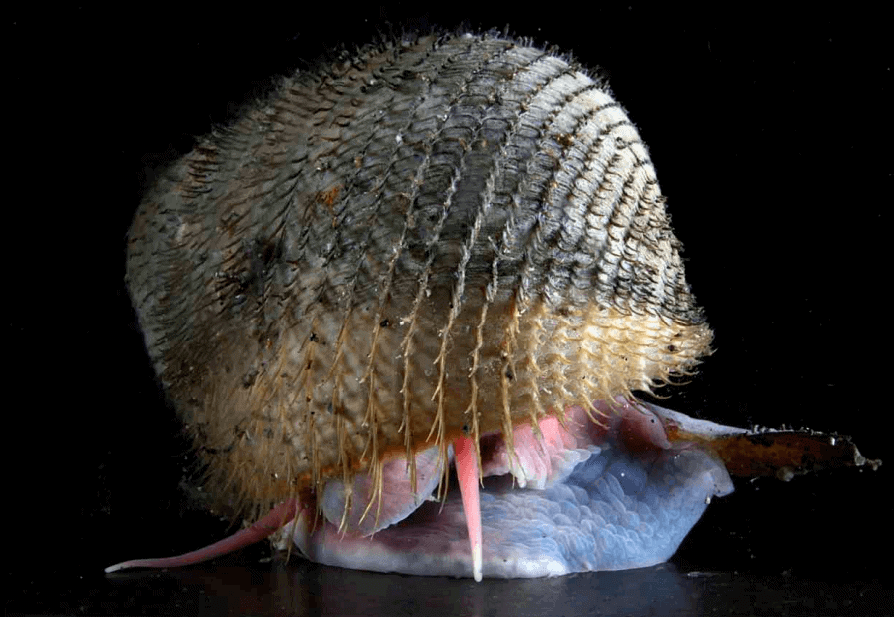
The Hydrothermal Vent Snail Has An Iron Foot
Hydrothermal vents create extreme conditions. Underwater magma chambers heat the water, and the temperatures can reach more than 750 degrees Fahrenheit. Furthermore, the creatures who cannot only live but thrive in these conditions are truly exceptional.
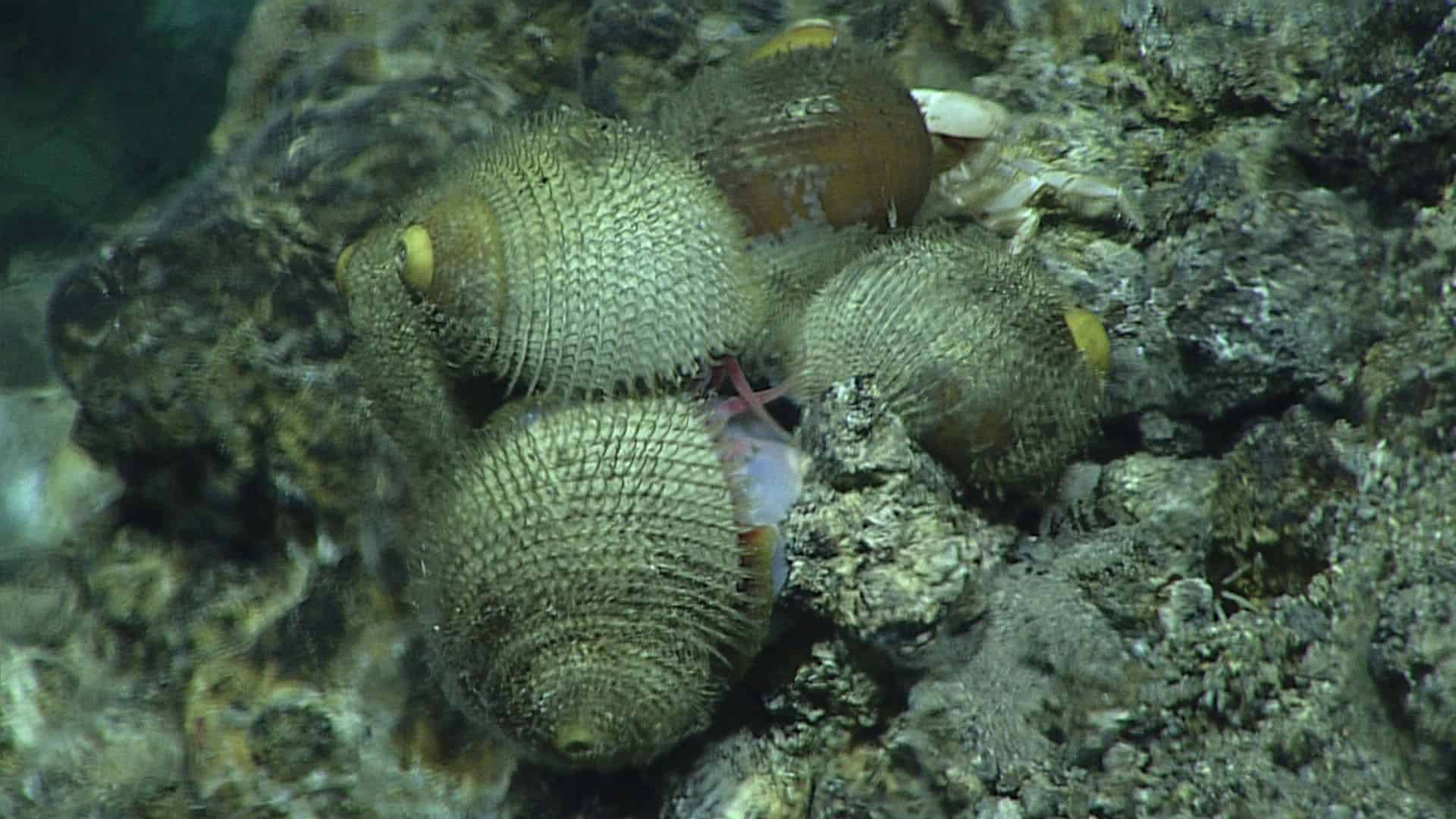
Take the hydrothermal vent snail, a creature that can take iron sulfide from the water and construct a shell of iron. But this creature does not stop there. Its foot – the part that comes out of the shell – is also covered with the same kind of armored plating as its shell.
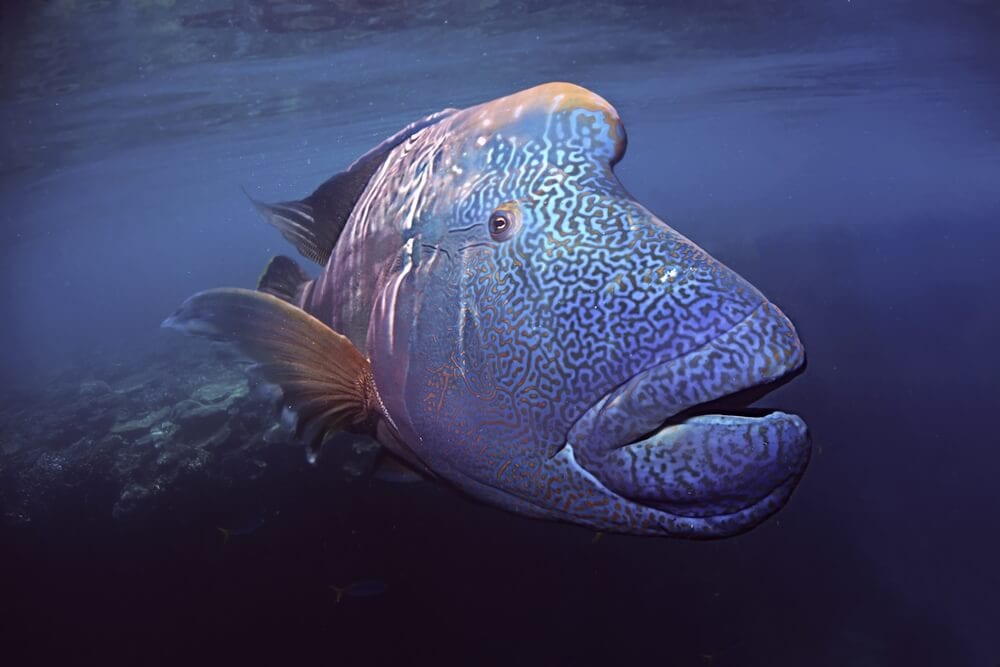
The Napoleon Wrasse Is An Underwater Hermaphrodite
According to the Census of Marine Life, “Exceeding two meters in length, the Napoleon Wrasse (Cheilinus undulatus) is one of the largest reef fish found in the warm waters of the Indian and Pacific oceans. The intricate blue-green design that decorates the face resembles New Zealand Maori war paint, the root of its alternative name, the Maori Wrasse.
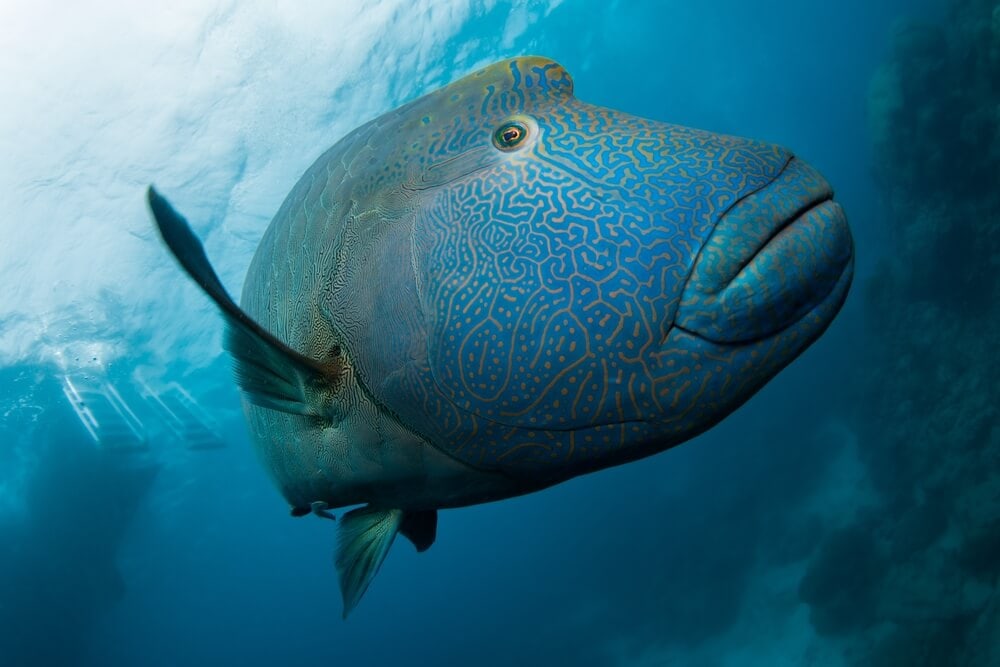
The designs are also unique to each individual, much like fingerprints. A protogynous hermaphrodite, this wrasse can change its sex from female to male.” So this fish is about as long as a grown human male, resembles people from an indigenous tribe from New Zealand preparing for war, and changes from male to female.
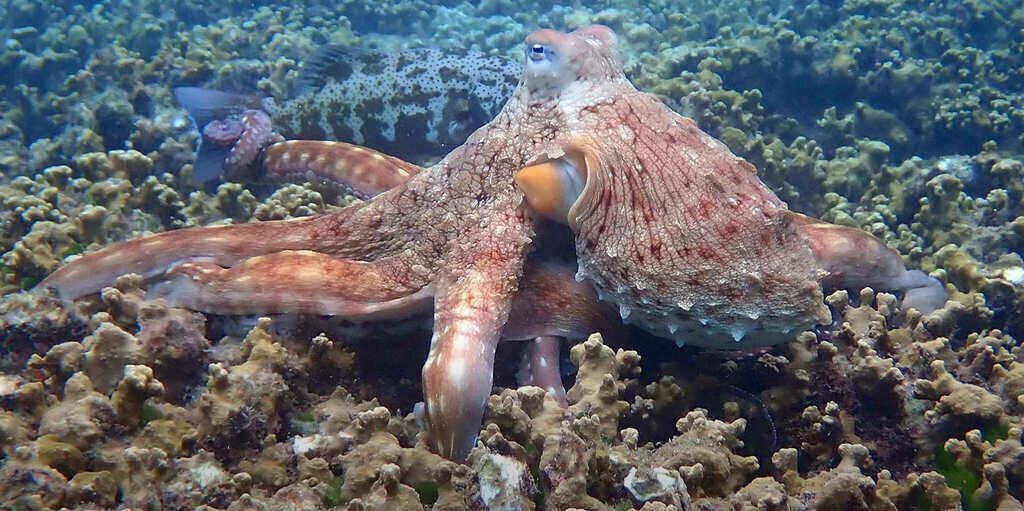
The Lizard Island Octopus Has Mastered The Art Of Mimicry
One feature common to octopuses is that they have chromatophores that allow them to blend in with their background. The Lizard Island octopus has chromatophores on steroids because it can blend in with a larger number of backgrounds than many of its relatives. It is one of the few animals that can imitate another animal to evade a predator!
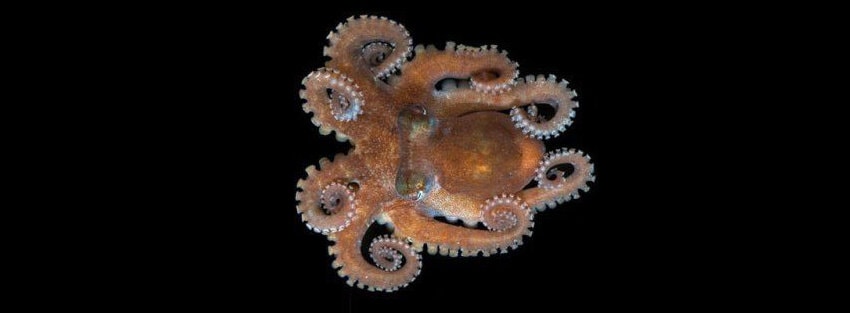
The term Lizard Island octopus derives from this creature’s home turf, or instead home surf, Lizard Island, part of Australia’s Great Barrier Reef. The octopus is relatively small compared to some of its relatives, usually only about two feet across.

Metapseudes Lives In Corral Rubble Off Of Australia
There are more arthropods on the planet than species from any other phyla, so, understandably, there are plenty of arthropods that we do not know much about yet. There are probably several arthropods still waiting to be discovered.
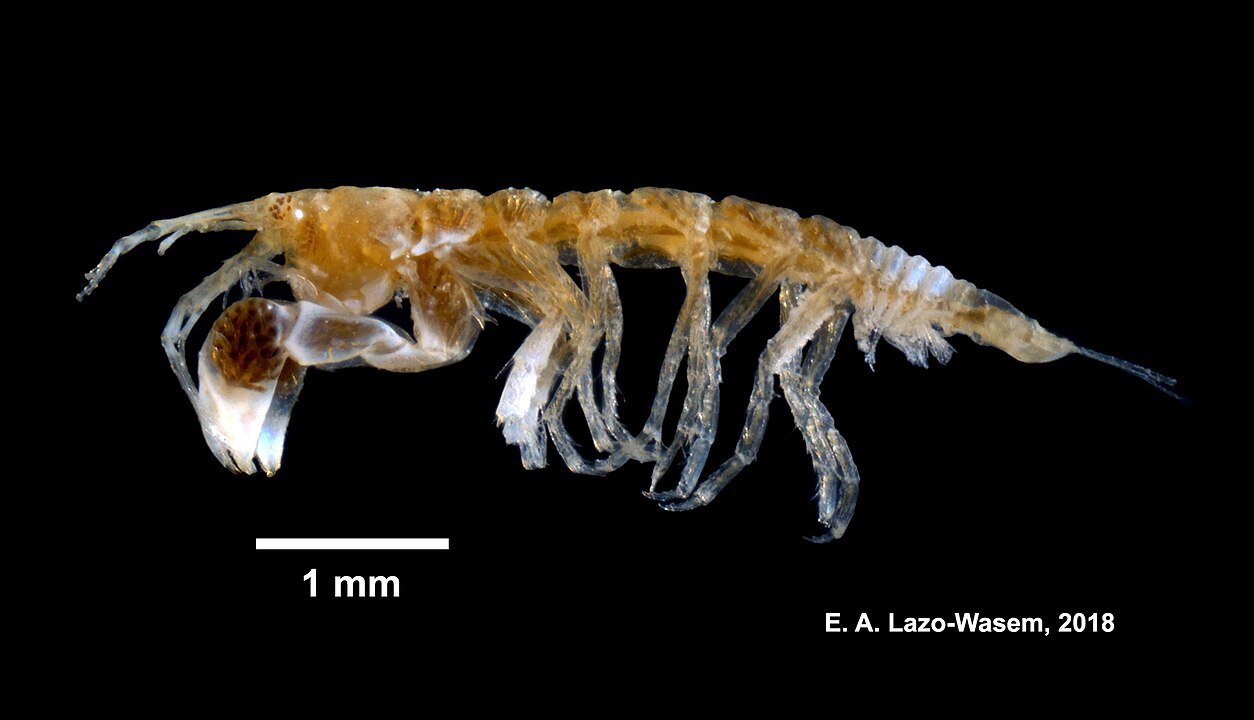
The Metapseudes is one of these mysterious arthropods about which we know very little. The sea creature lives off of Western Australia among old coral, much of which has died. It has a strange appearance, and marine biologists don’t know why. They also don’t know what it does.
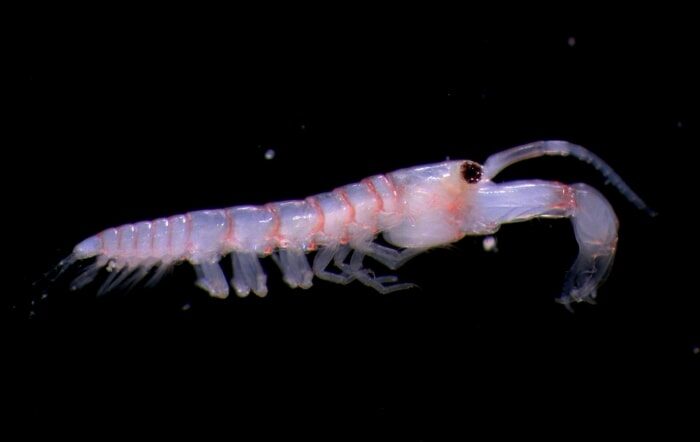
The Delicate Claw Lobster Is Quite Delicate
When you think of crustaceans, you probably think about creatures with a shell that covers soft body. Consider crabs, lobsters, and shrimp, to name just a few. Moreover, for those who eat crustaceans, you know that you have to get the meaty flesh out of the shell.
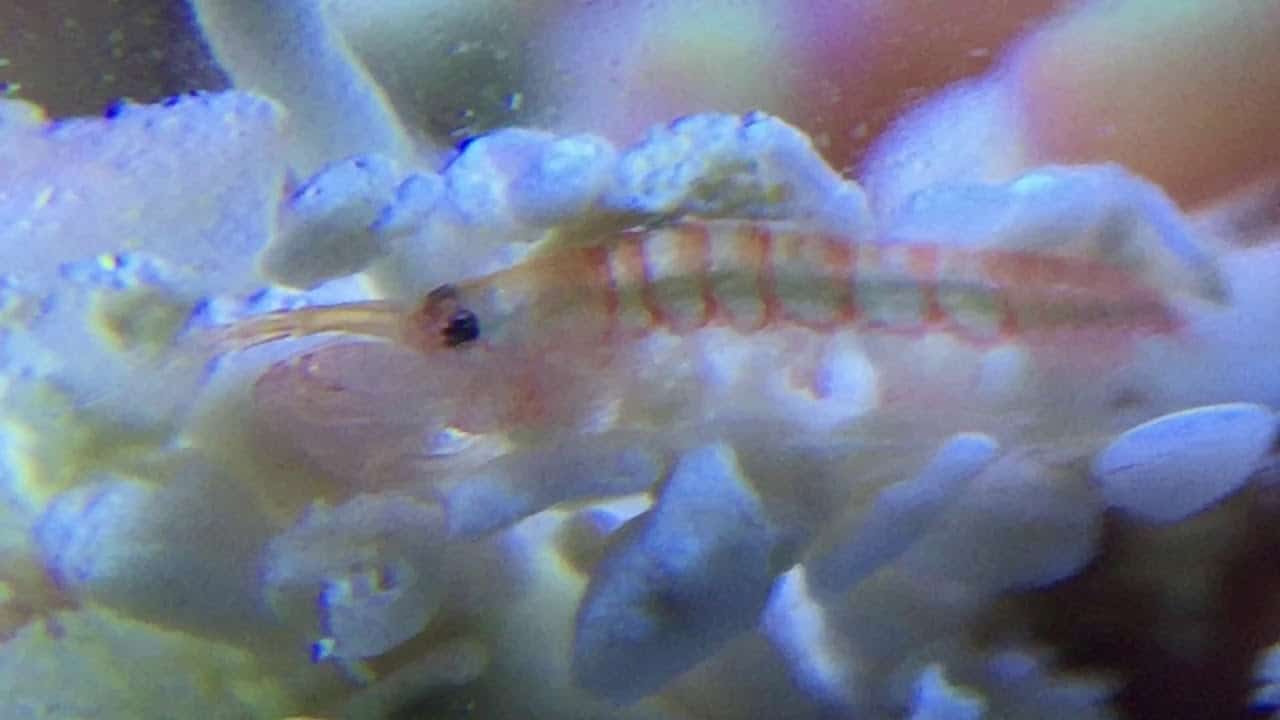
But the poor delicate claw lobster lacks this protective coating. It swims through the water, a forlorn, delicate creature who might be easy prey for anything else swimming. It has a pronounced claw, like other crustaceans, but how much good can that claw do if it is a squishy piece of flesh?
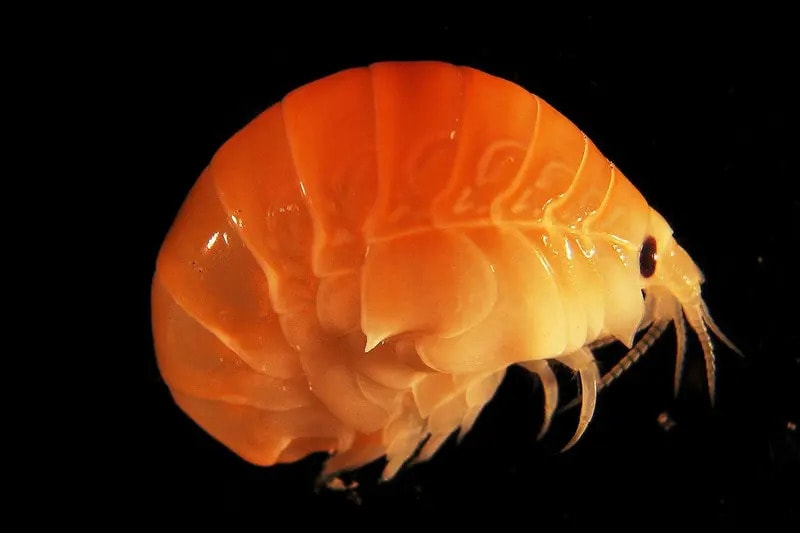
Some Shrimp Live 600 Feet Underwater In Antarctica
Most of the world’s shrimp live in warm waters, in areas like the Gulf of Mexico that borders the southern states of Florida, Alabama, Mississippi, Louisiana, and Texas, on to the eastern border of Mexico. However, unexpectedly, scientists have found a shrimp-like creature that lives in one of the coldest environments on the planet.
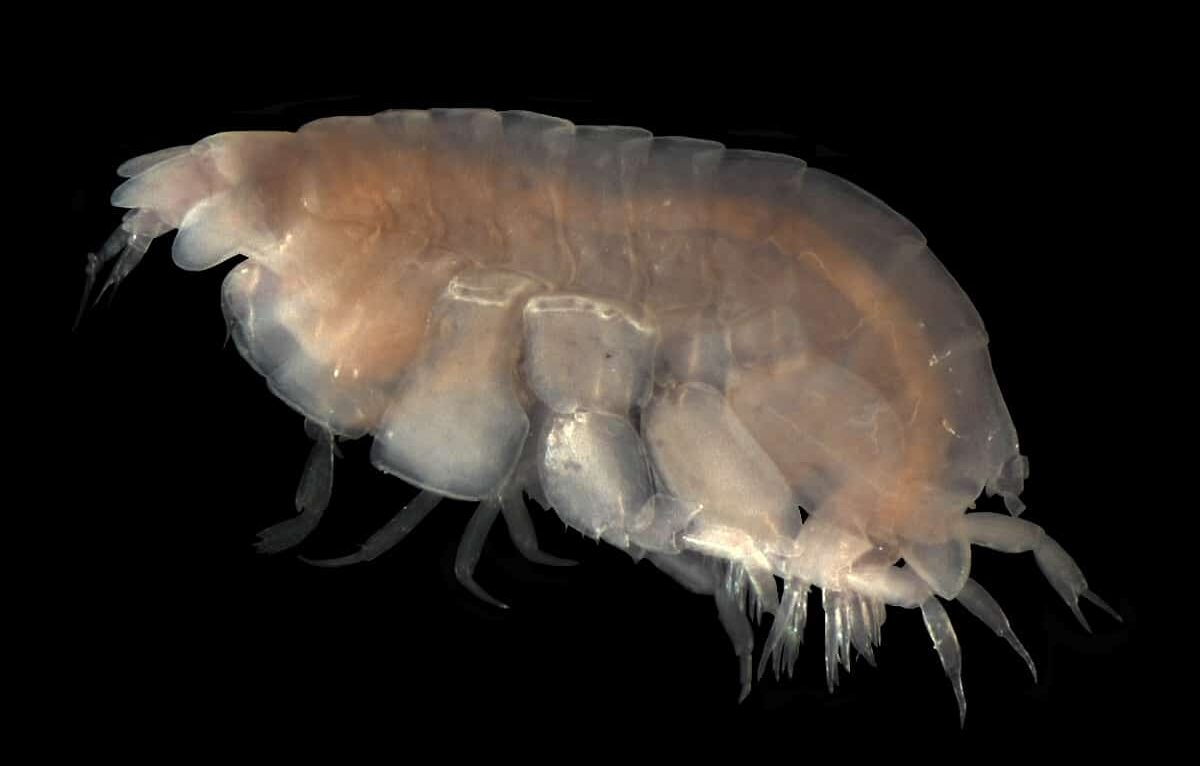
Lyssianasid amphipod lives 600 feet underwater in the remarkably cold waters off of Antarctica. Scientists have known for quite a while that single-cellular organisms, known as extremophiles, can live in this harsh environment. That a multi-cellular organism would be found there was truly astonishing.

Goblin Sharks Live Up To Their Name
What has a giant nose, razor-sharp teeth, and is very rarely seen by humans? If your answer is a goblin, you are pretty close. The goblin shark, aptly named for its large nose-like feature and ferocious teeth, has been spotted fewer than 50 times since it was first discovered in 1898.
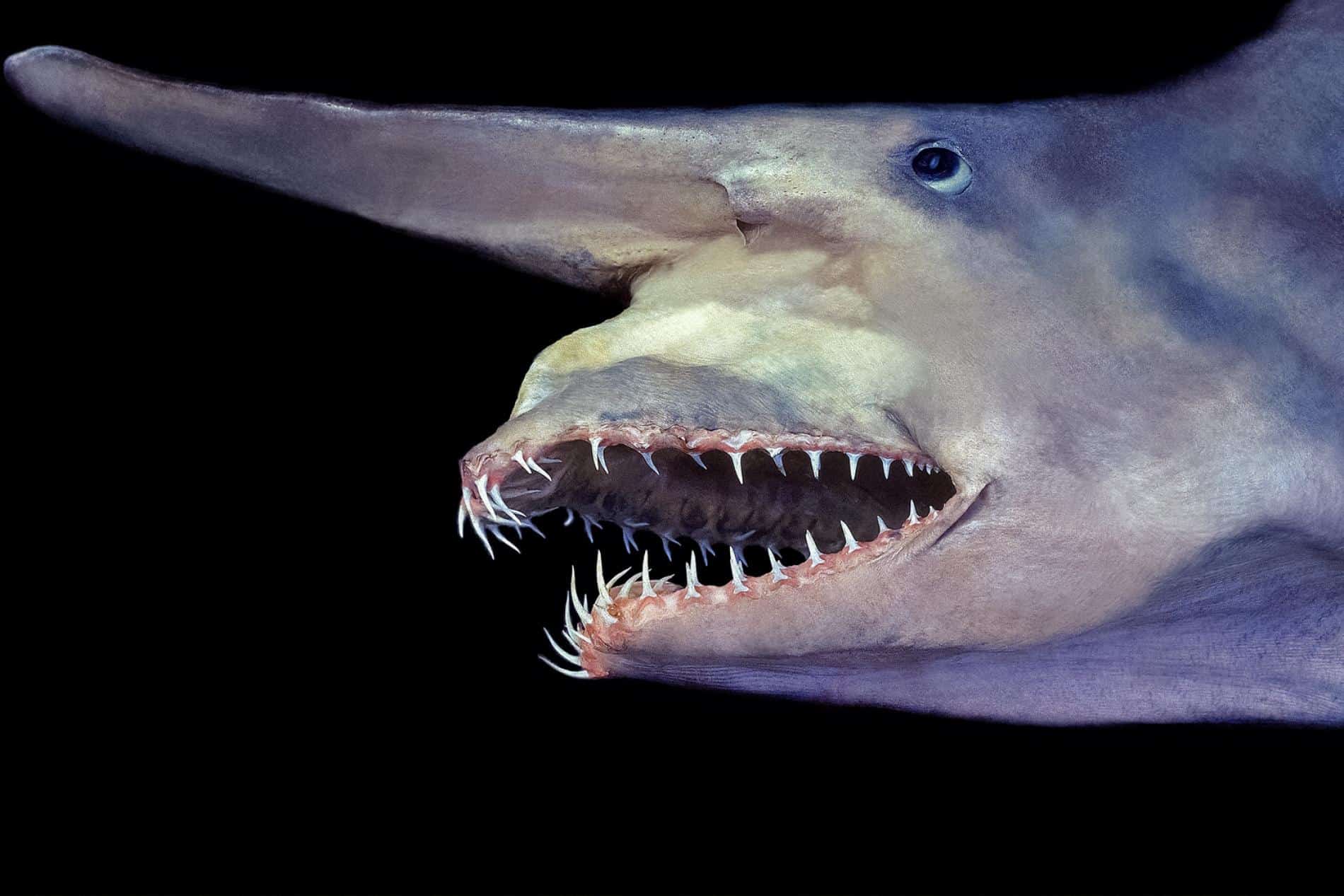
These mysterious sharks are known to grow to at least 15 feet long, though there is no telling what length they max out at least with so few sightings. We do know that they are fierce carnivores that can move their jaws outwards to swallow prey. We’re pretty okay if we never see one of these things in real life.
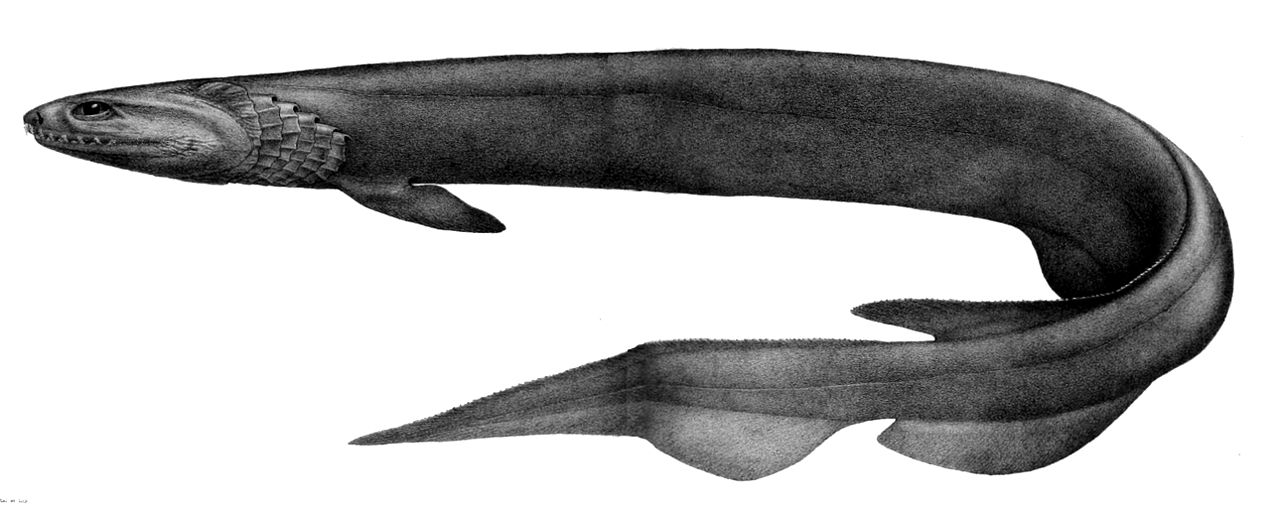
Frilled Sharks Come With No Frills
Is Shark Week your favorite week of the year? If so, you may know that sharks are some of the oldest creatures in the world. They are terrifying and attack a minimal number of humans each year, usually mistaking them for seals and other prey.
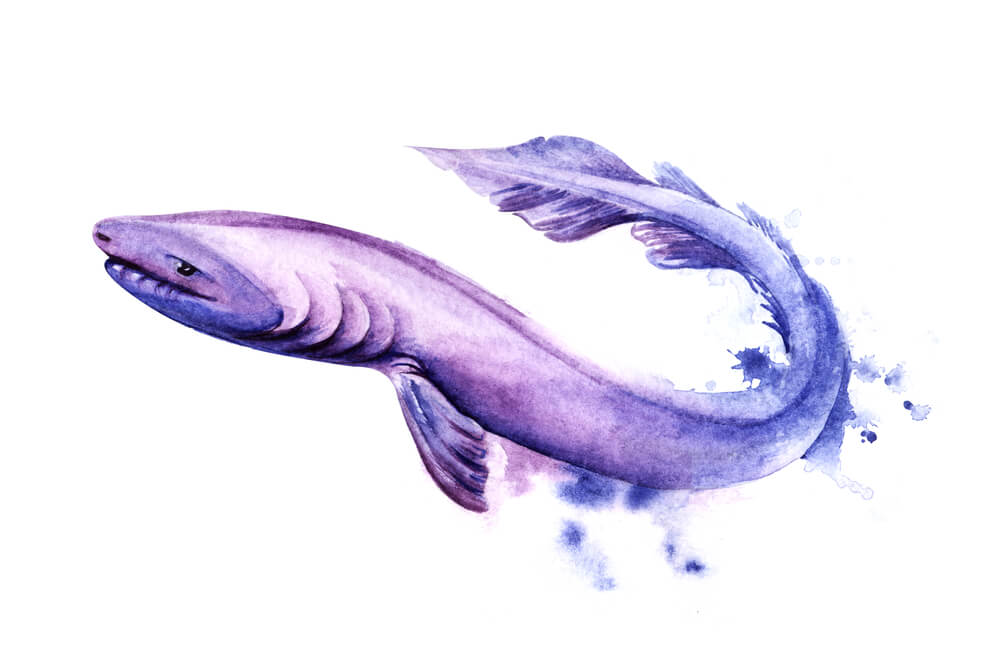
The frilled shark, so named for its, well, frilly structures on its teeth and head is one of the oldest kinds of sharks around. It has changed very little since prehistoric days, so it is a living fossil. Seeing one of these sharks is like getting a glimpse into the ocean’s deep (no pun intended) history.

